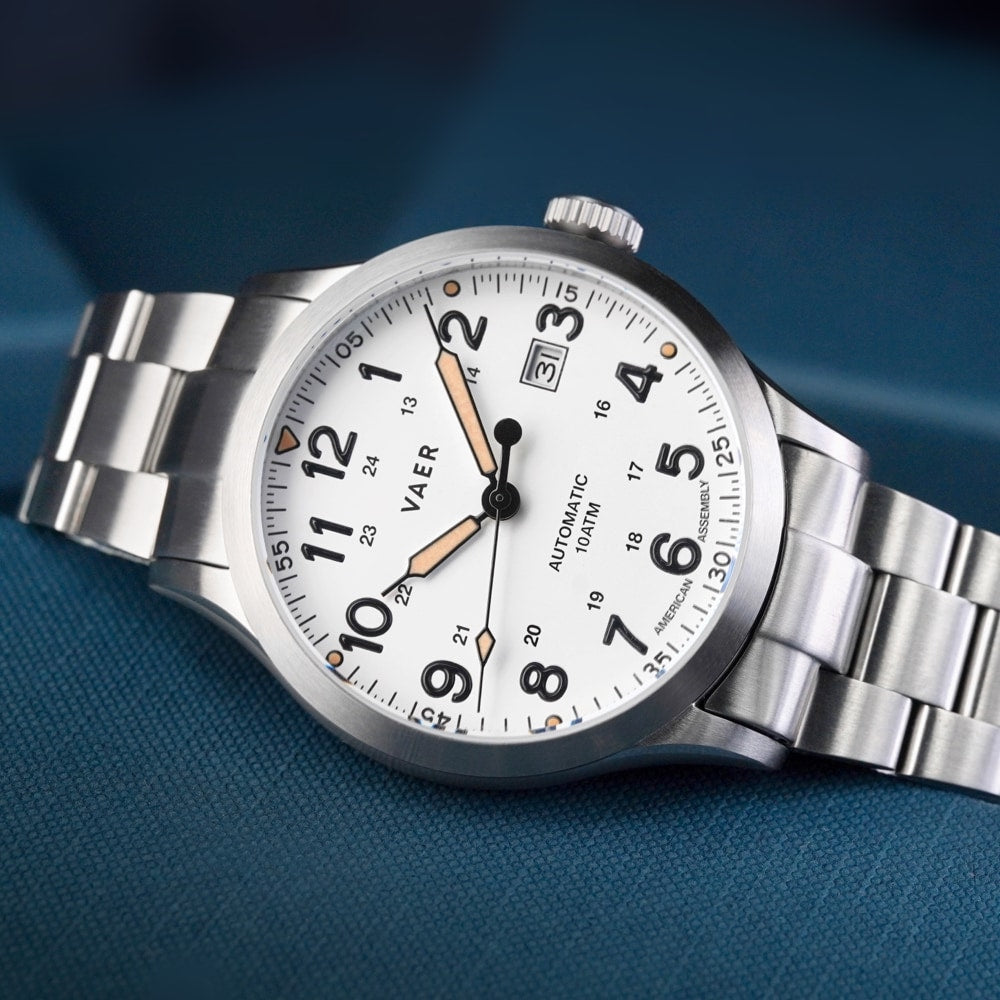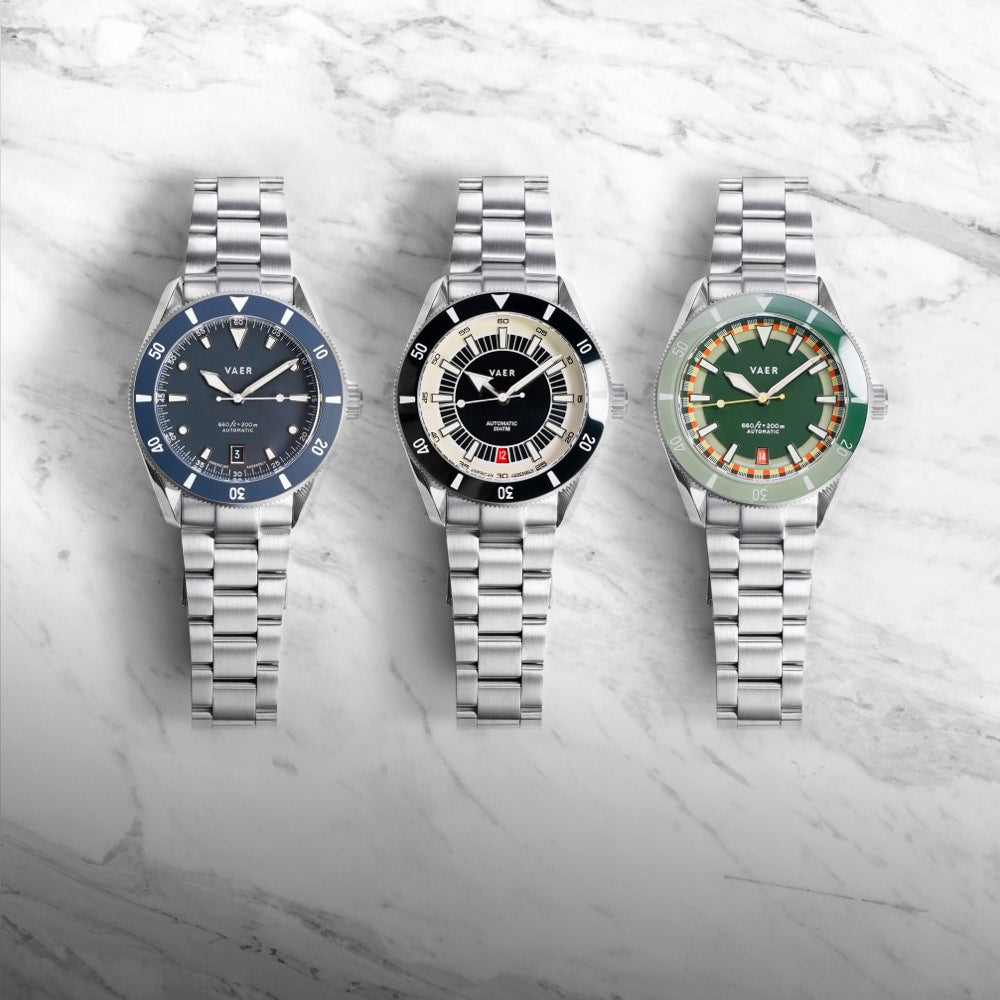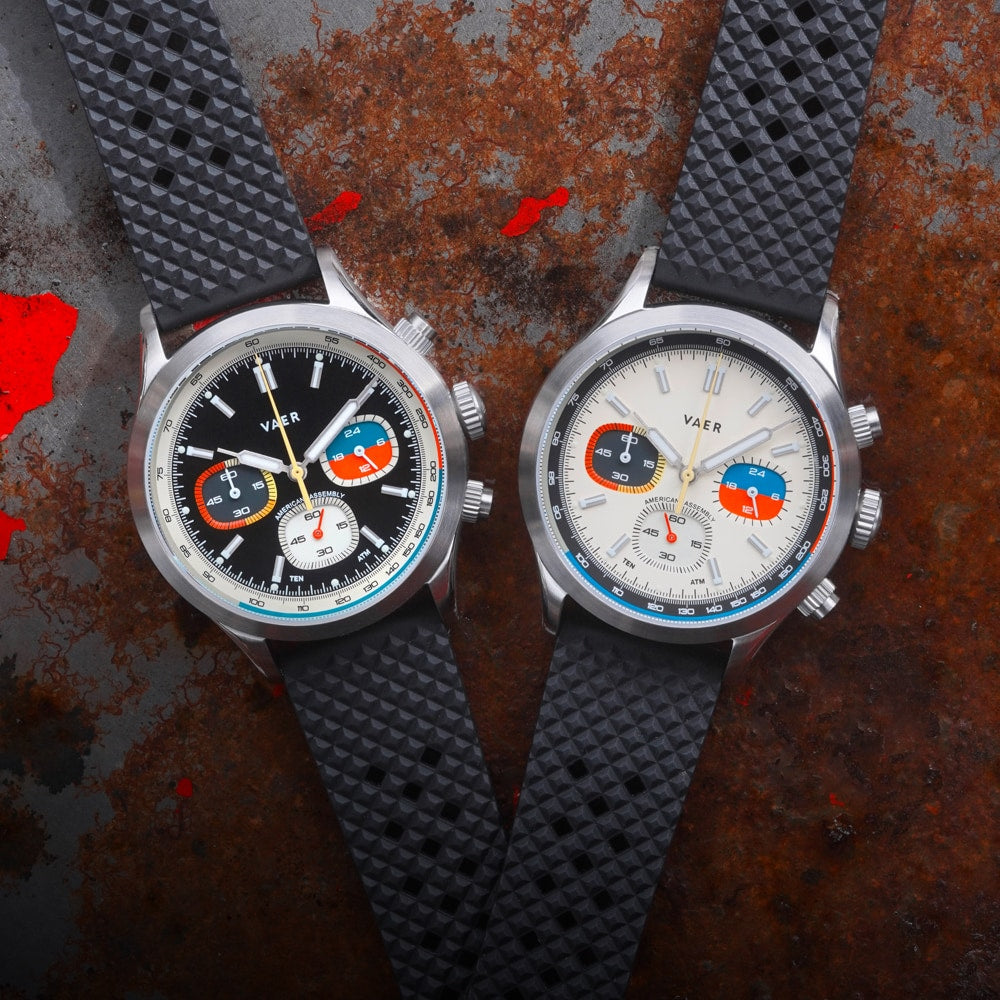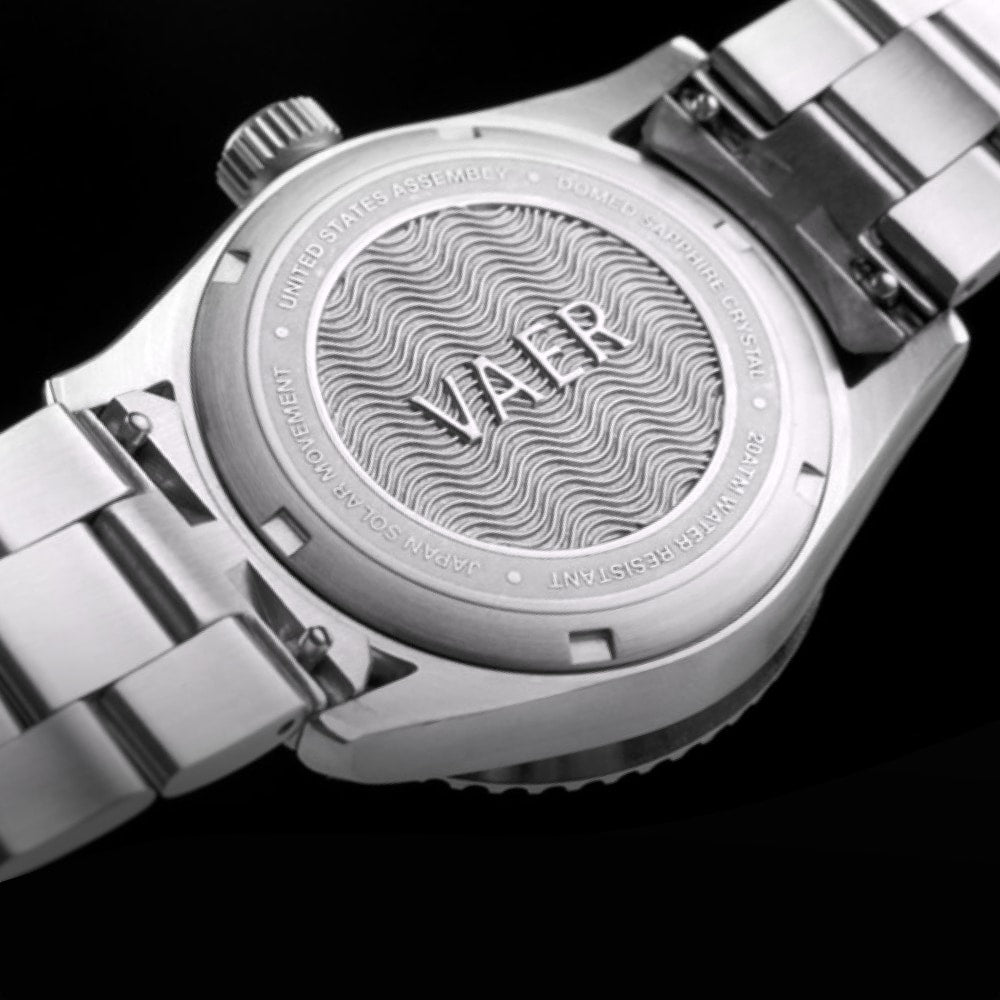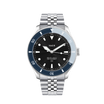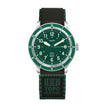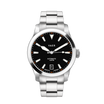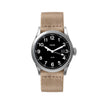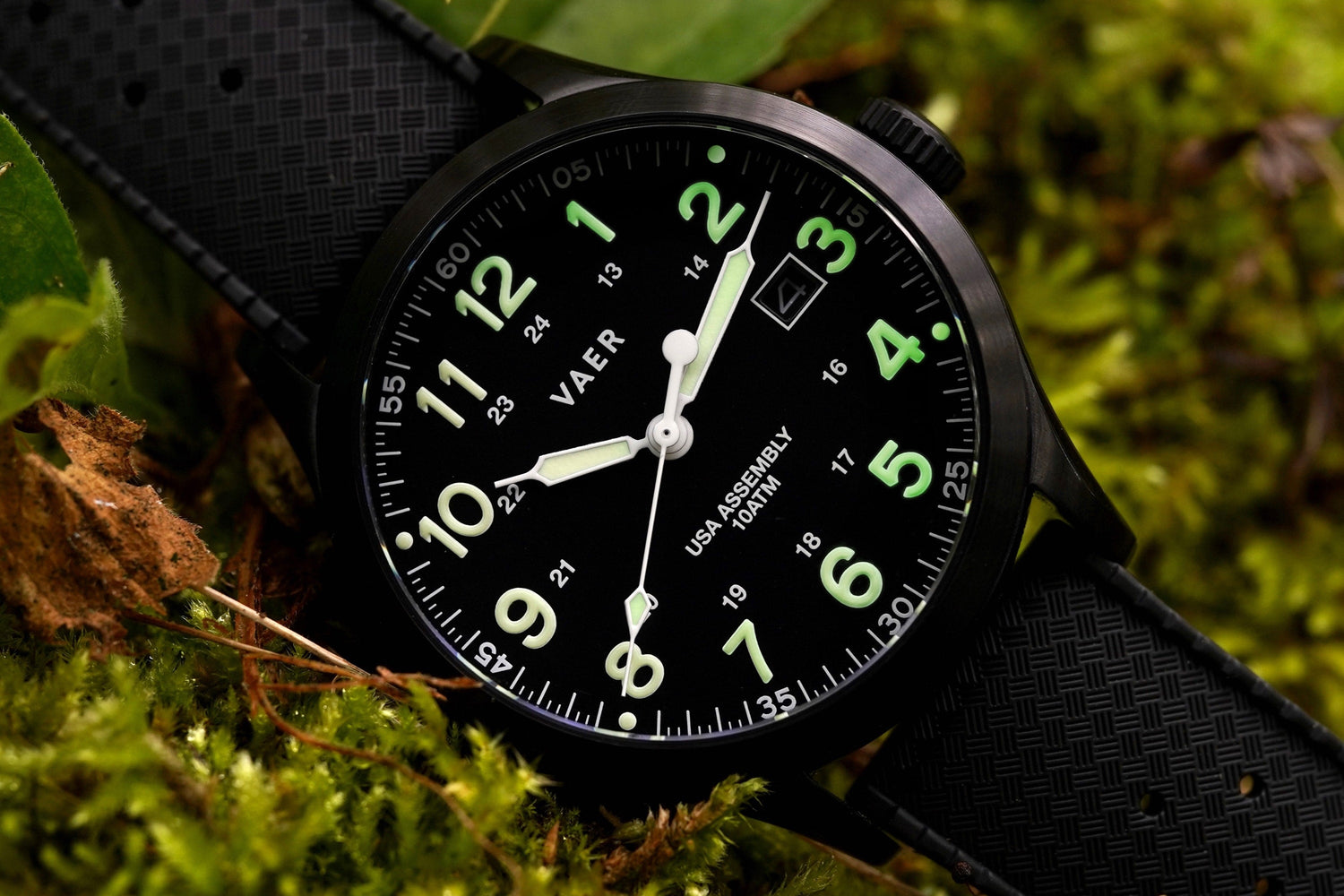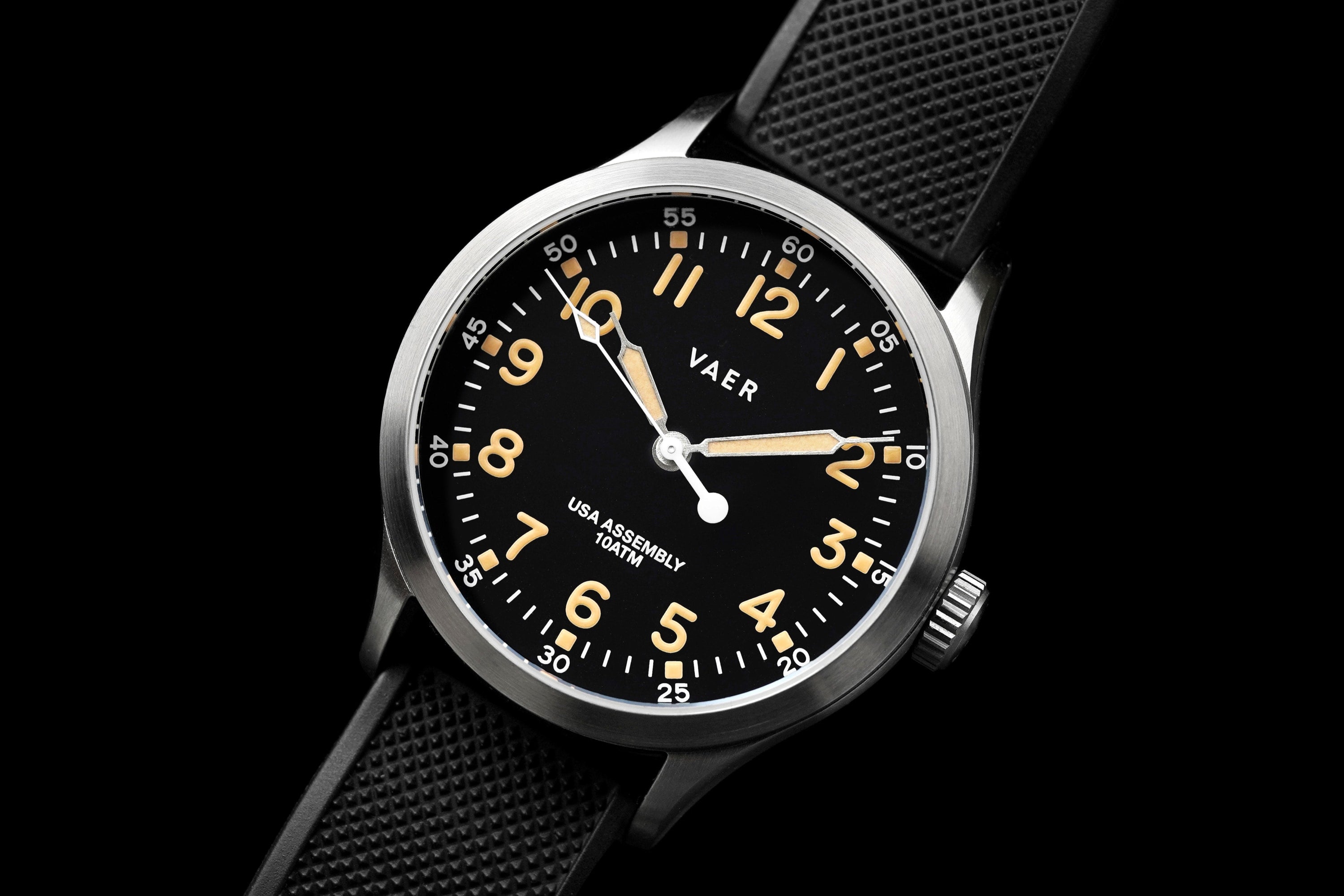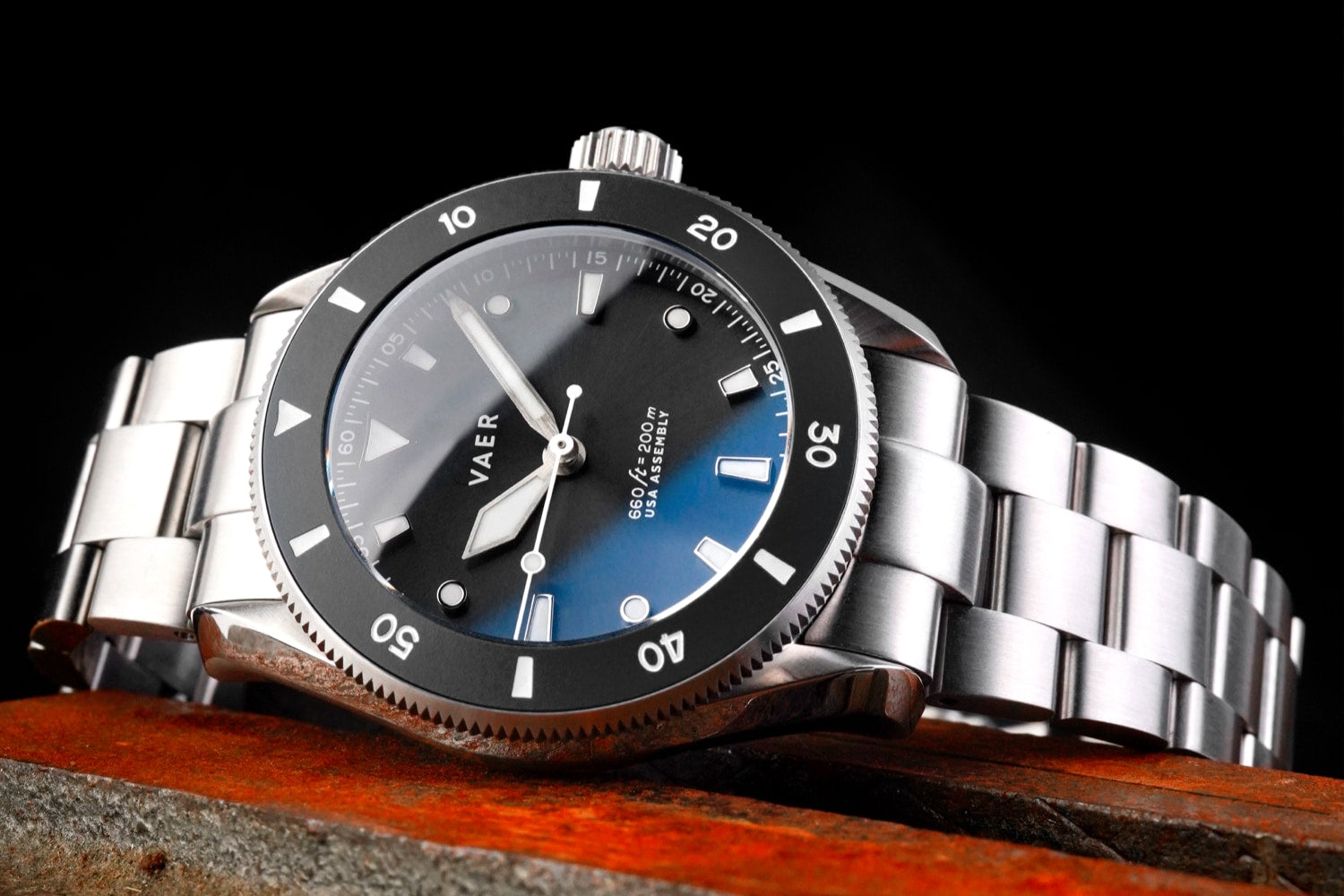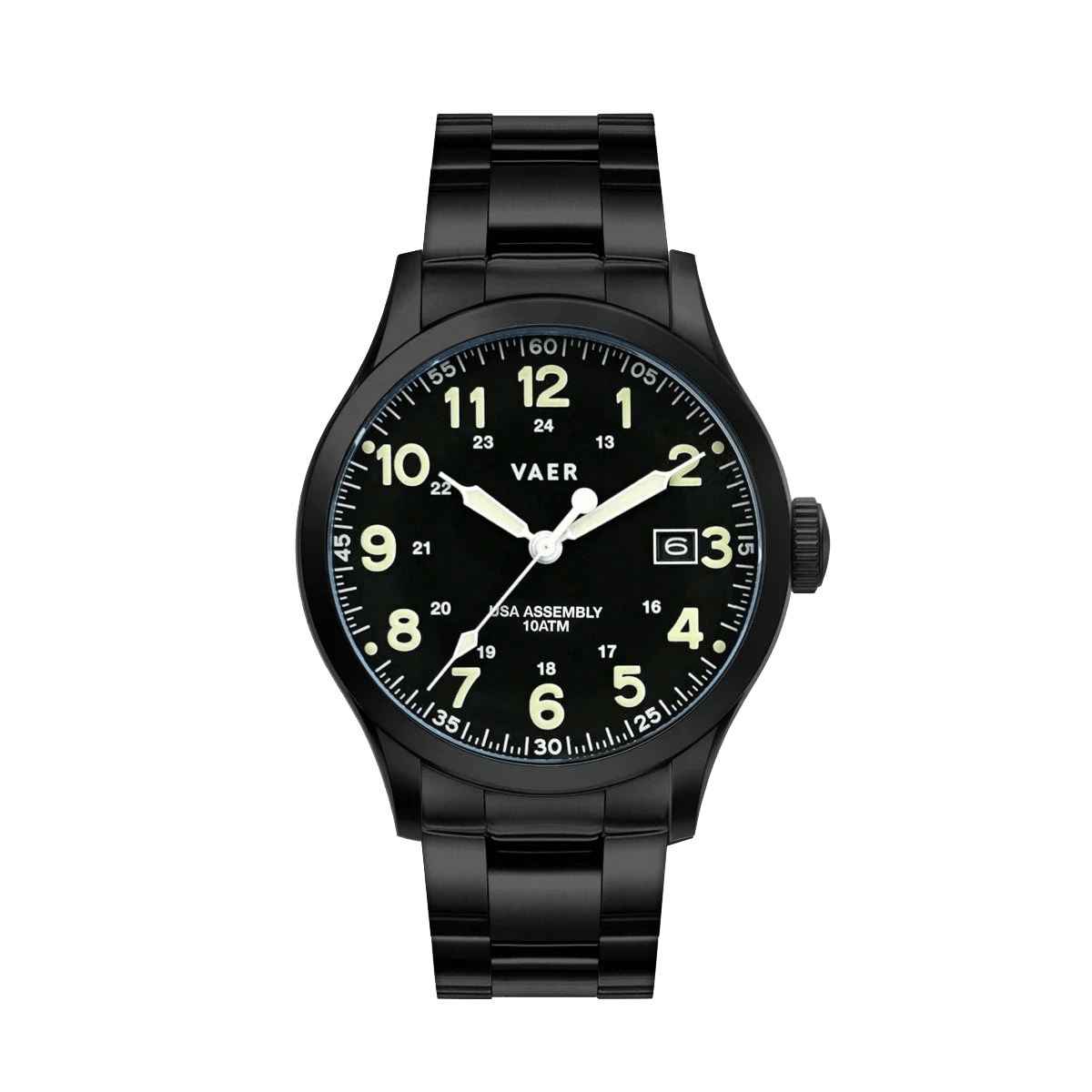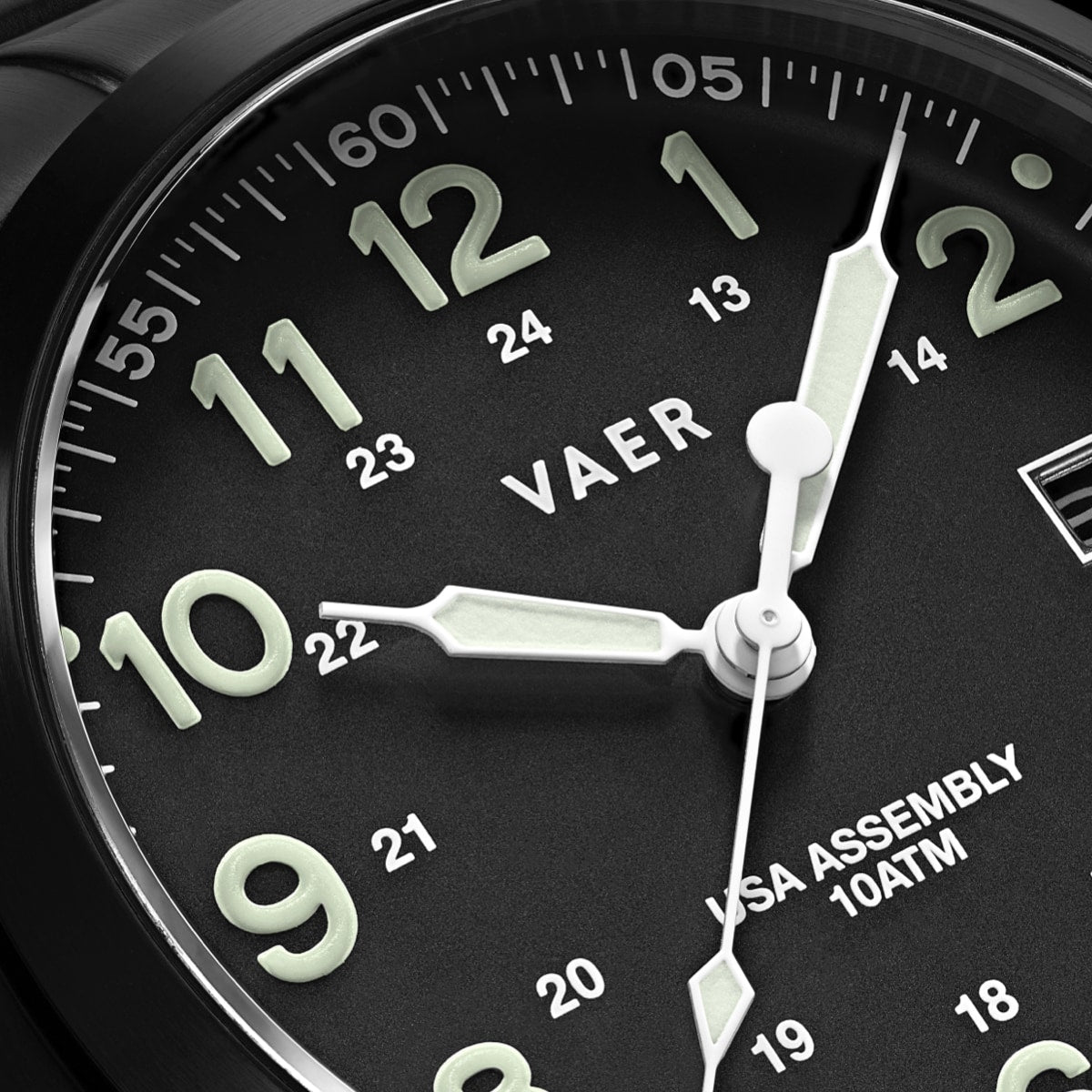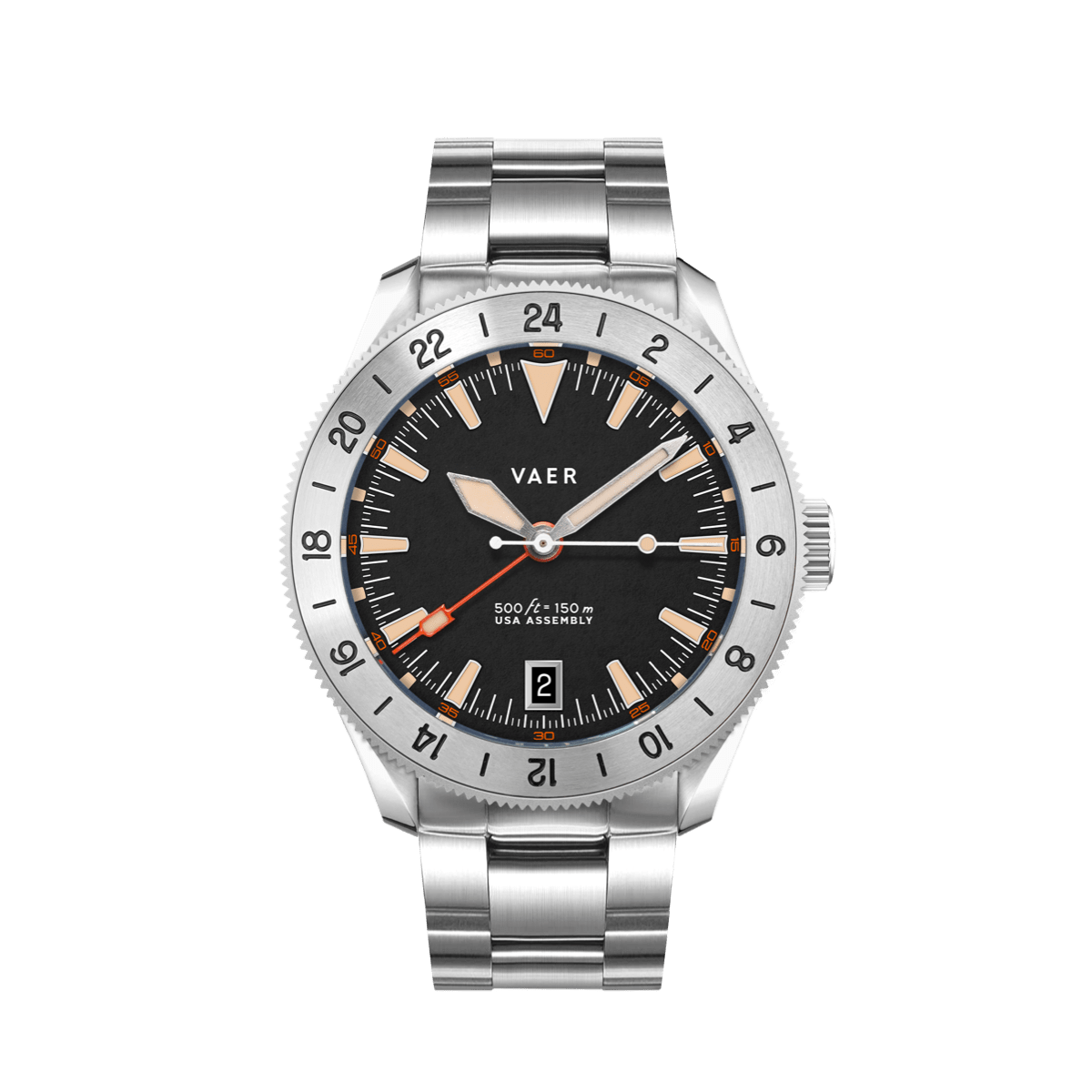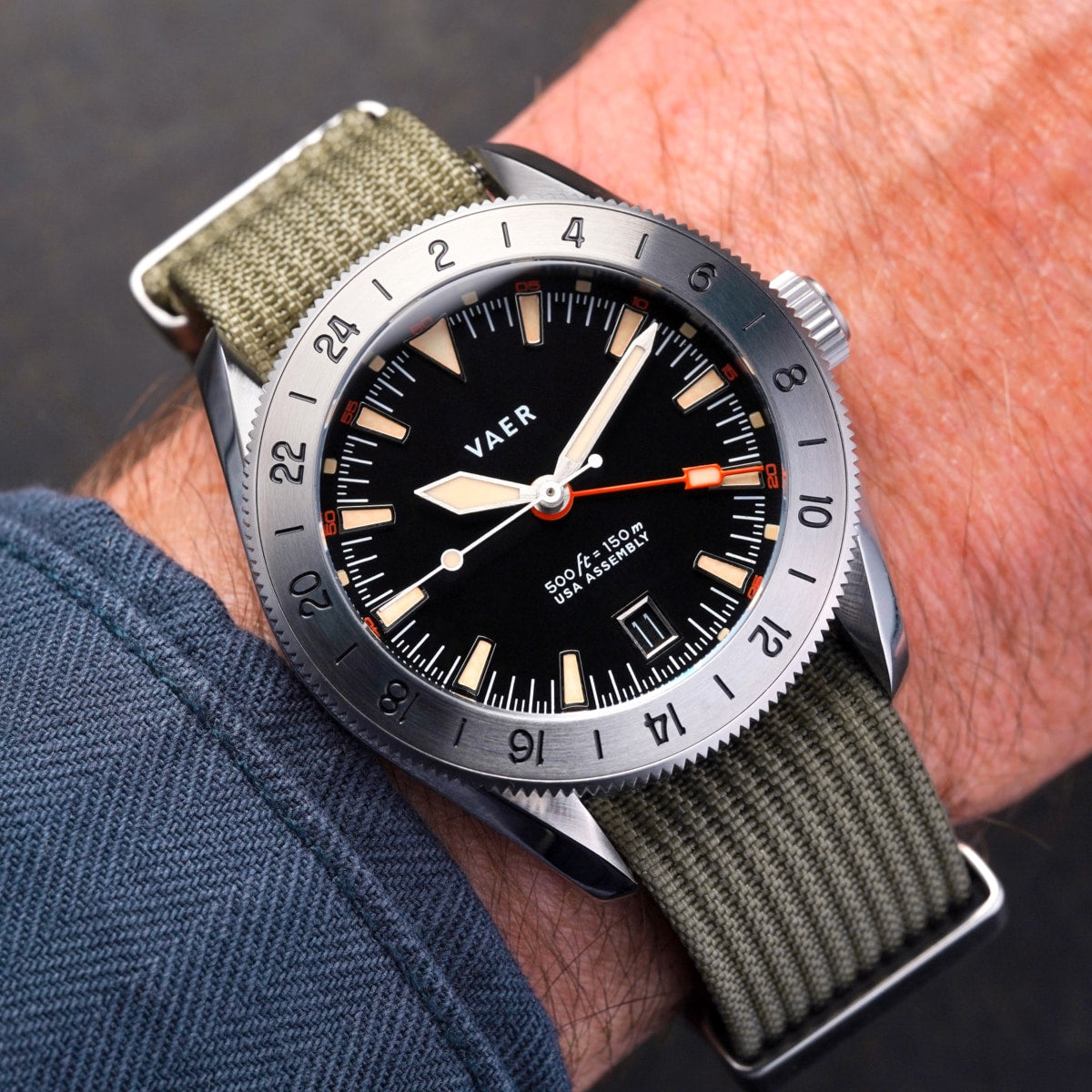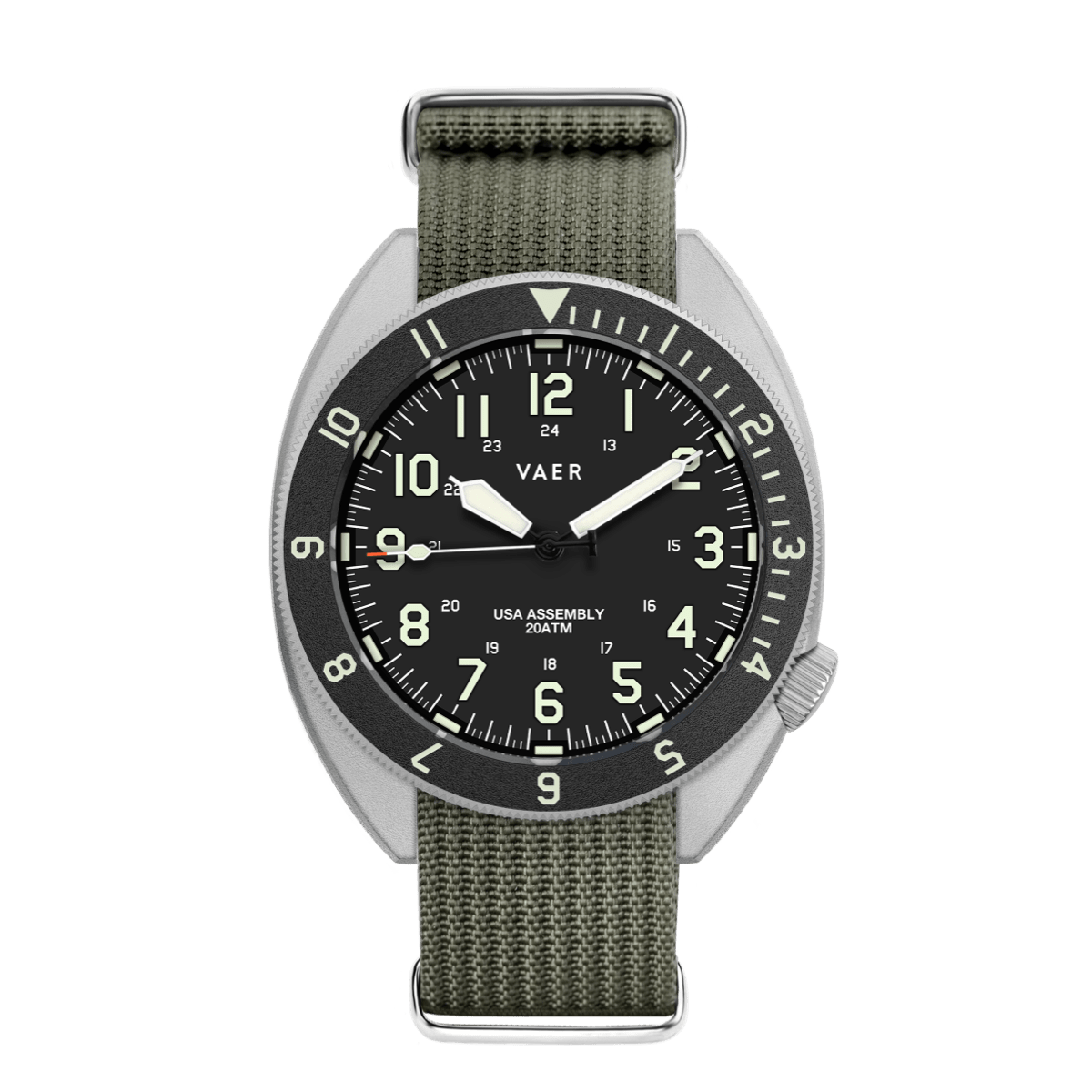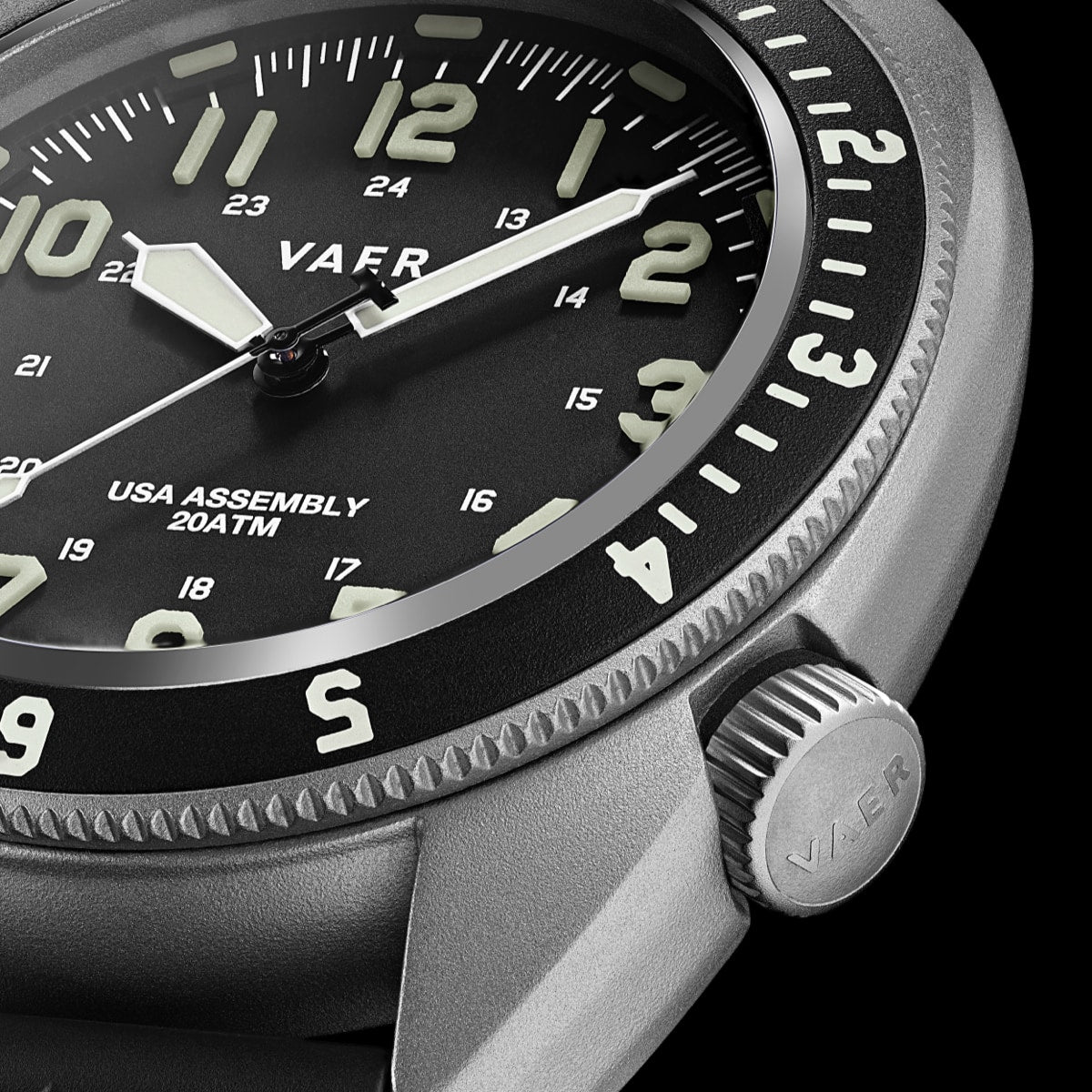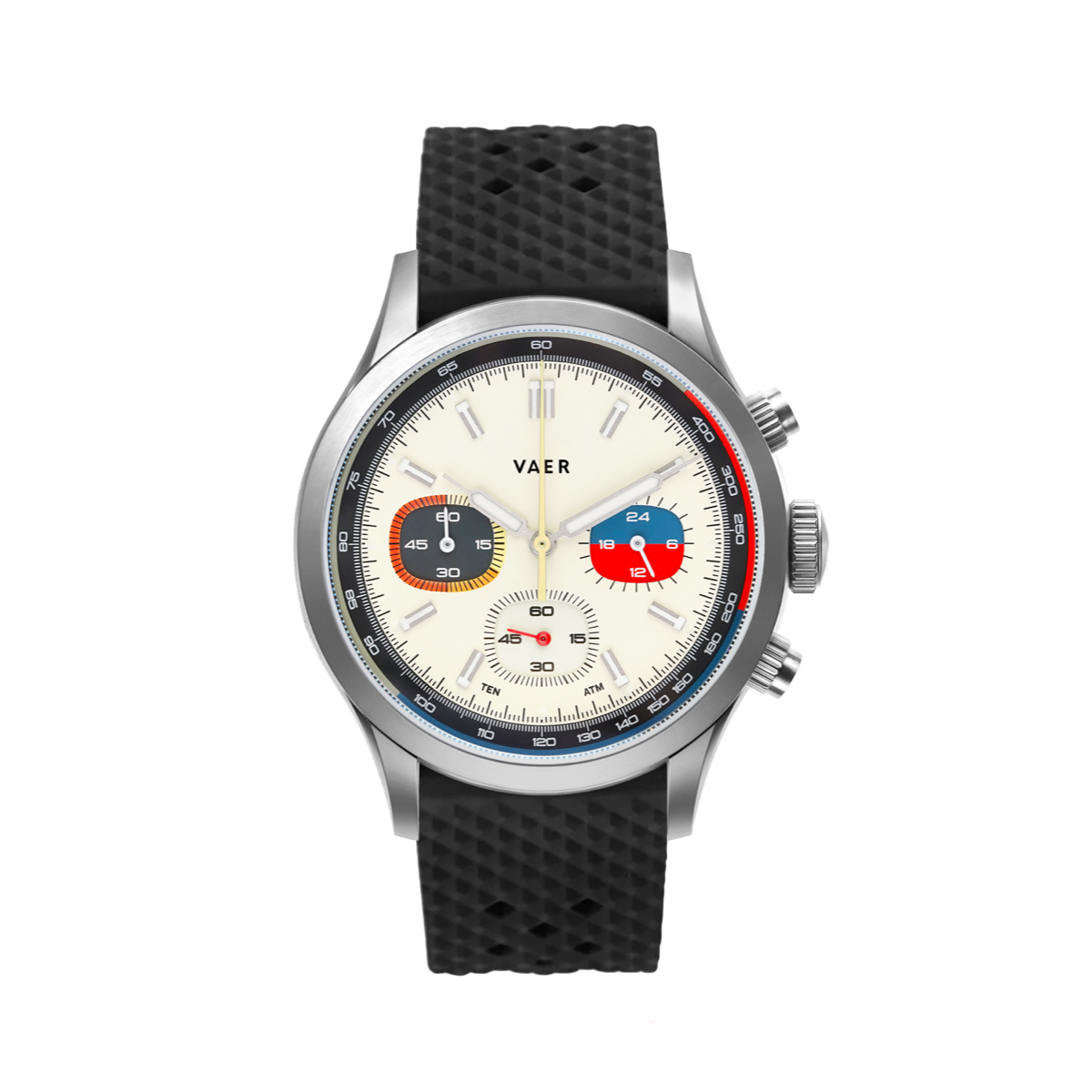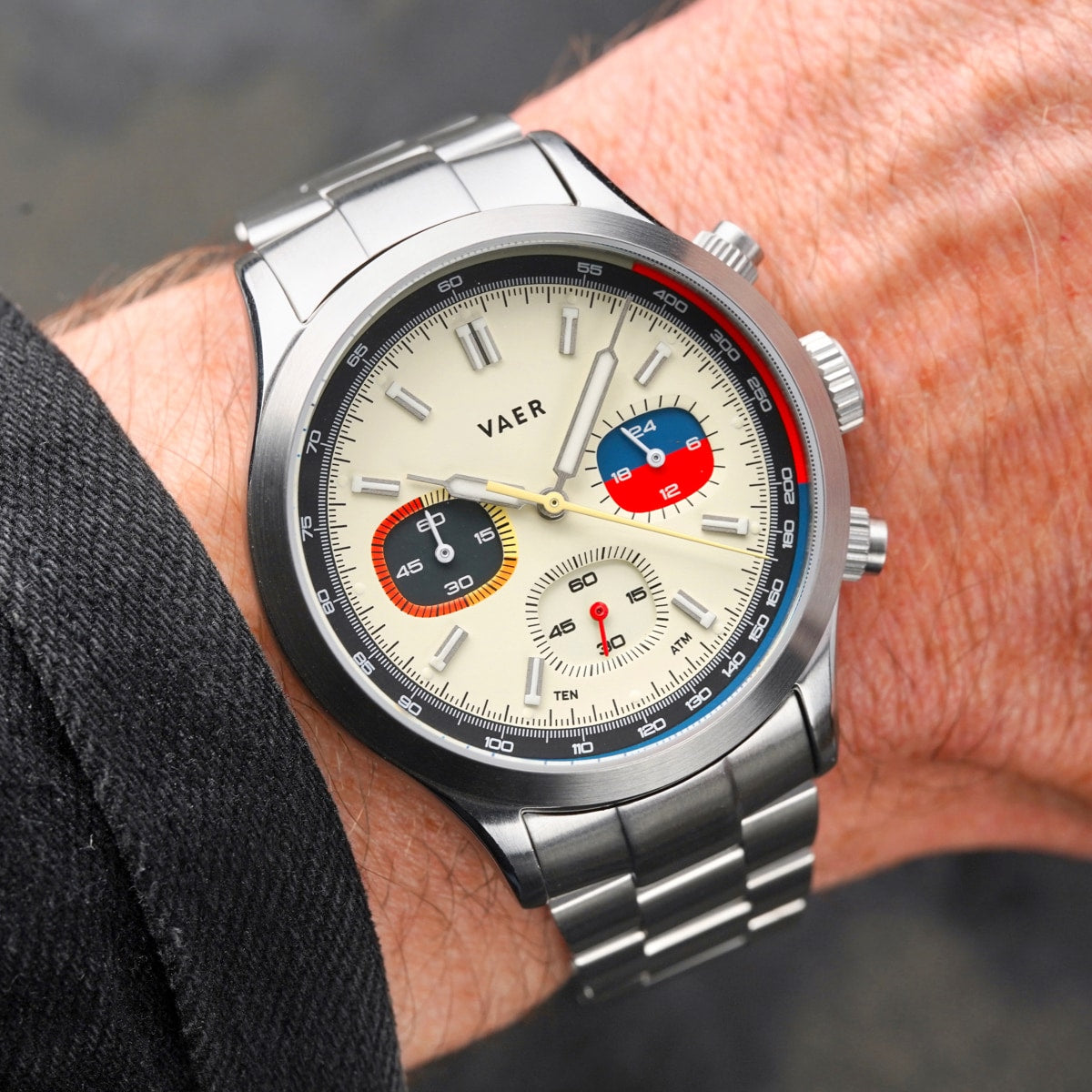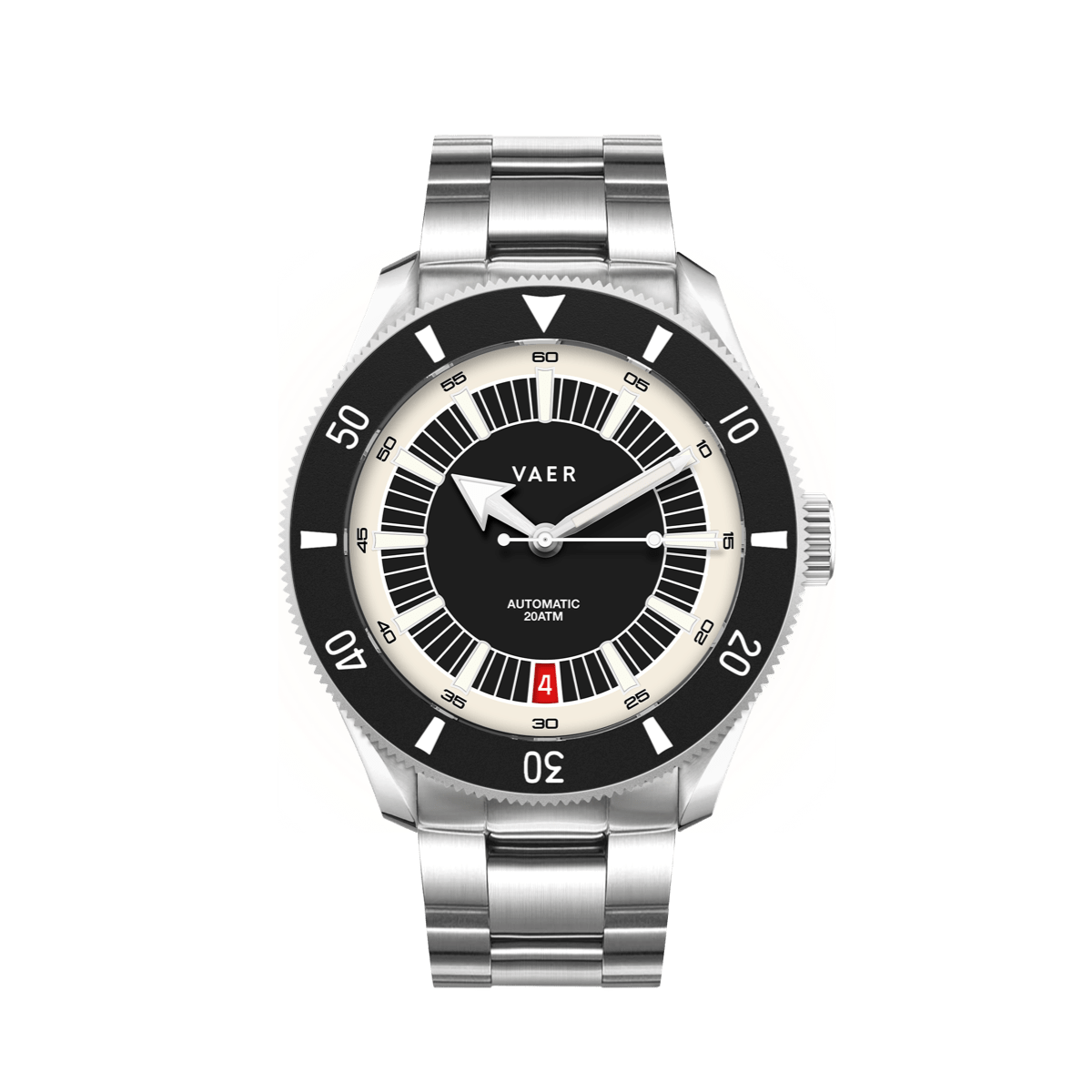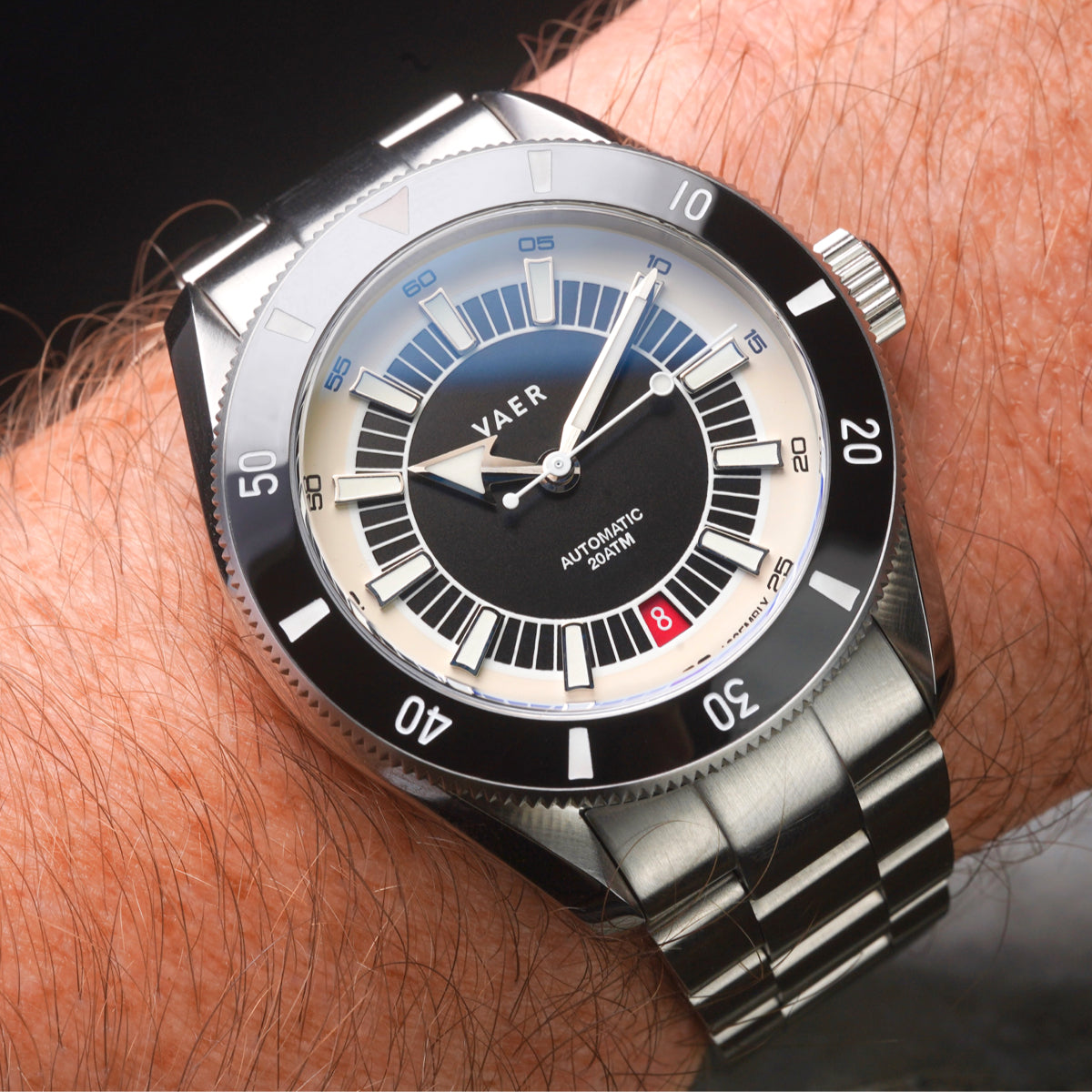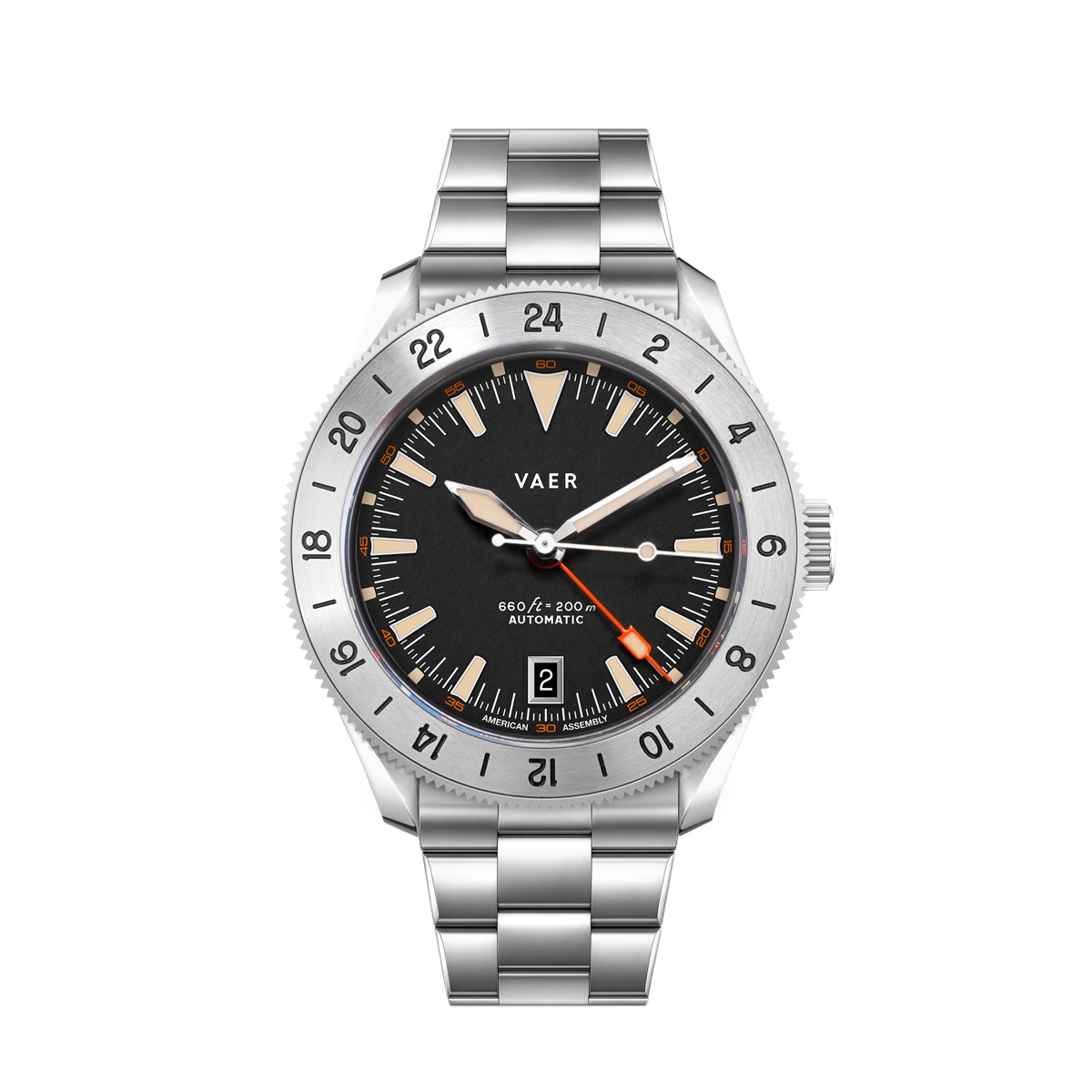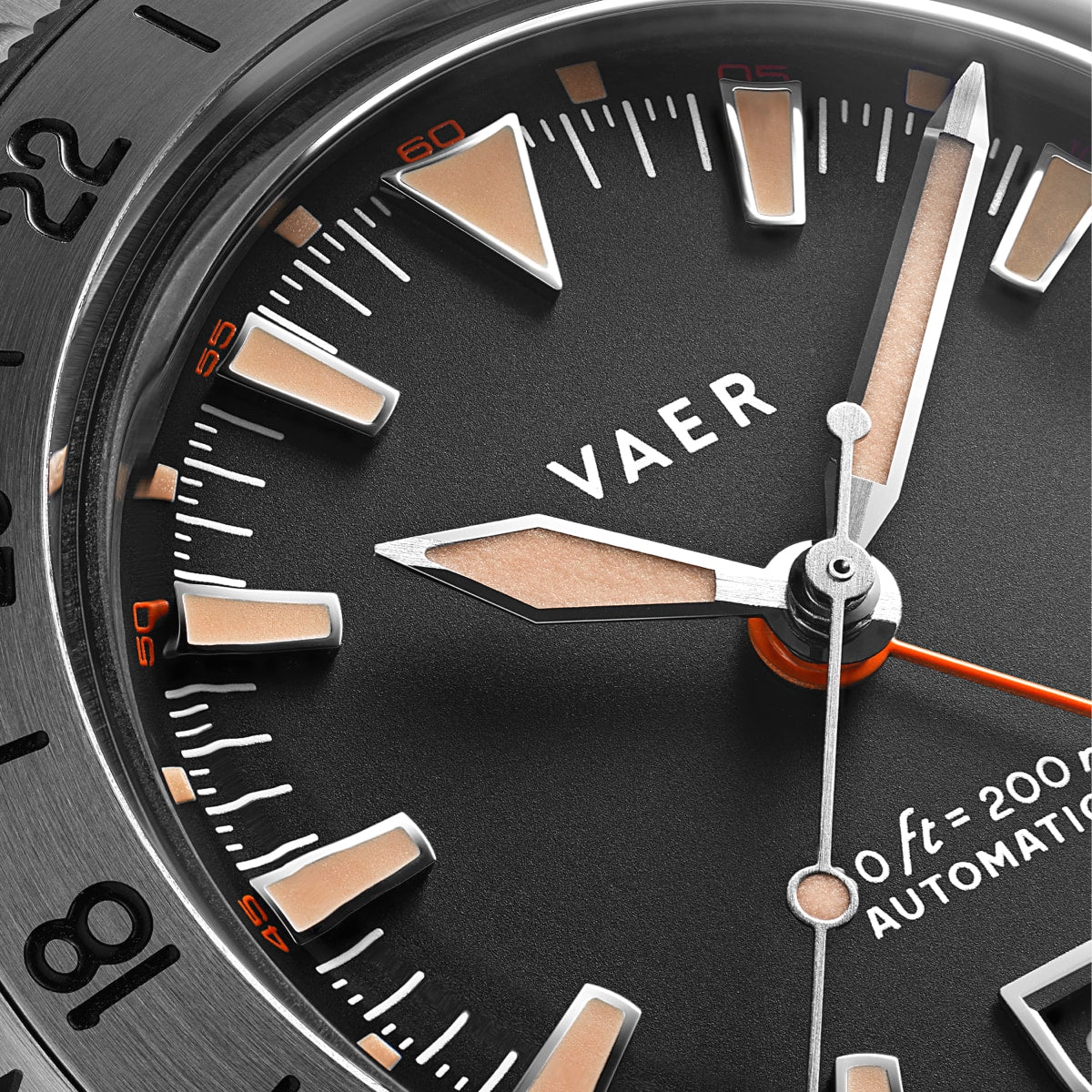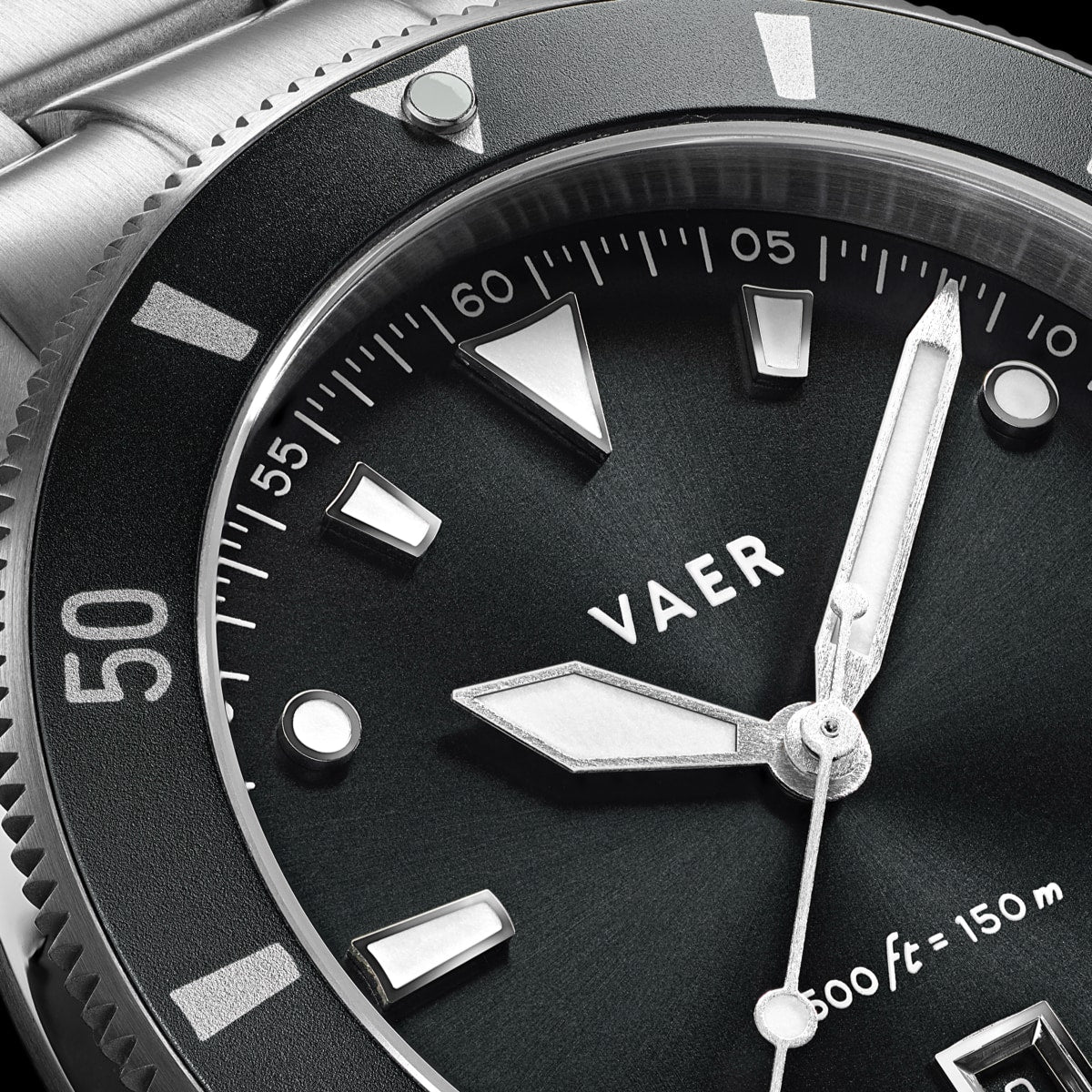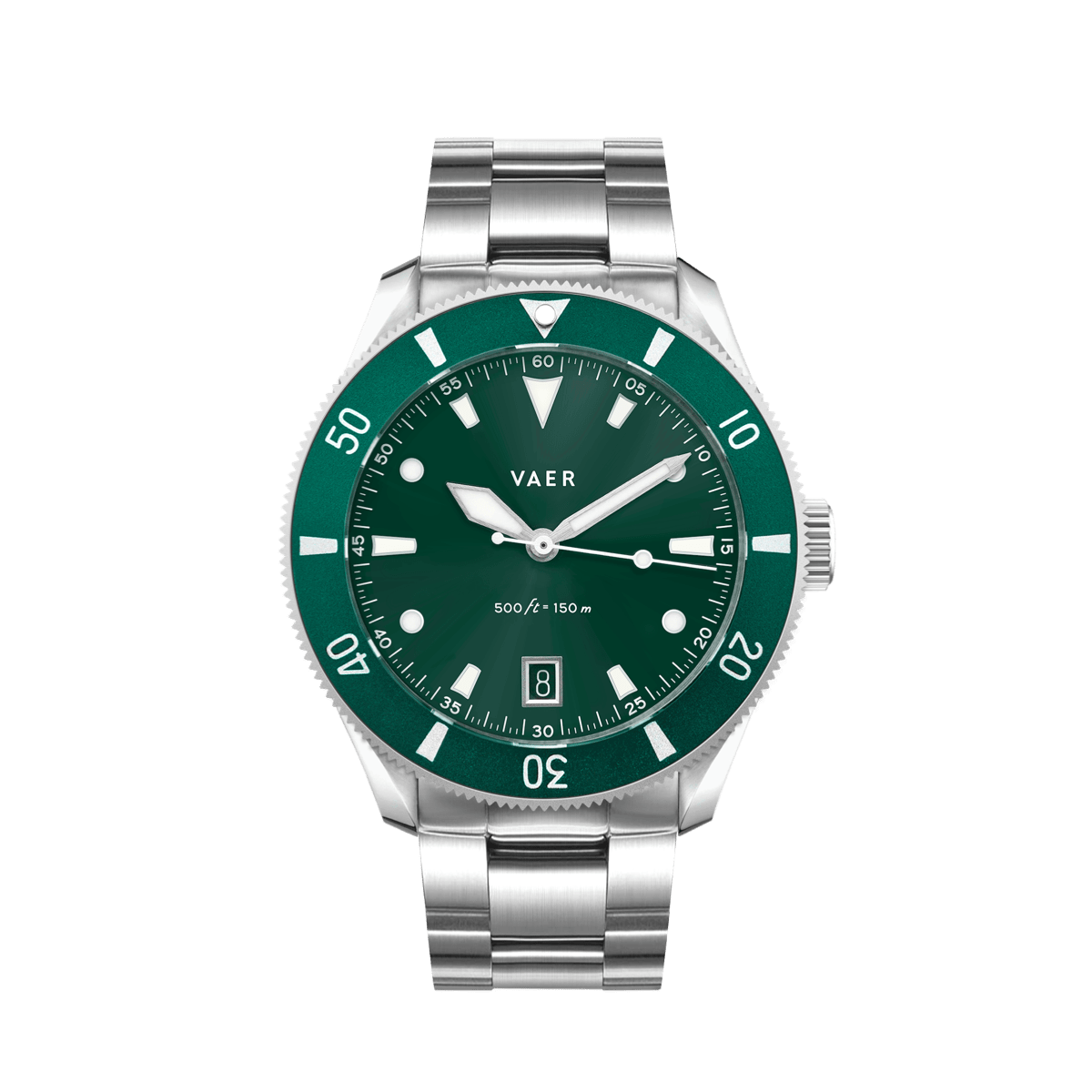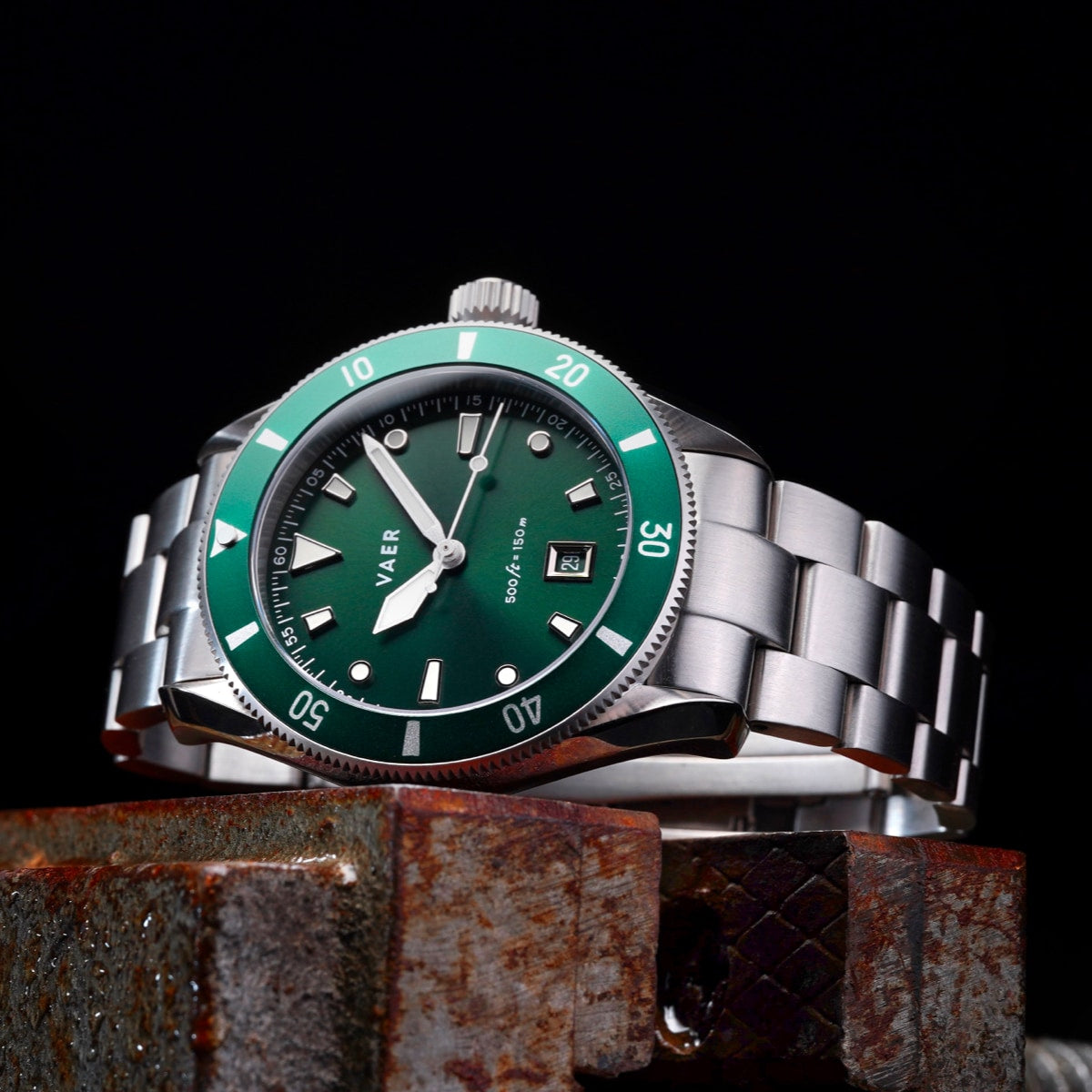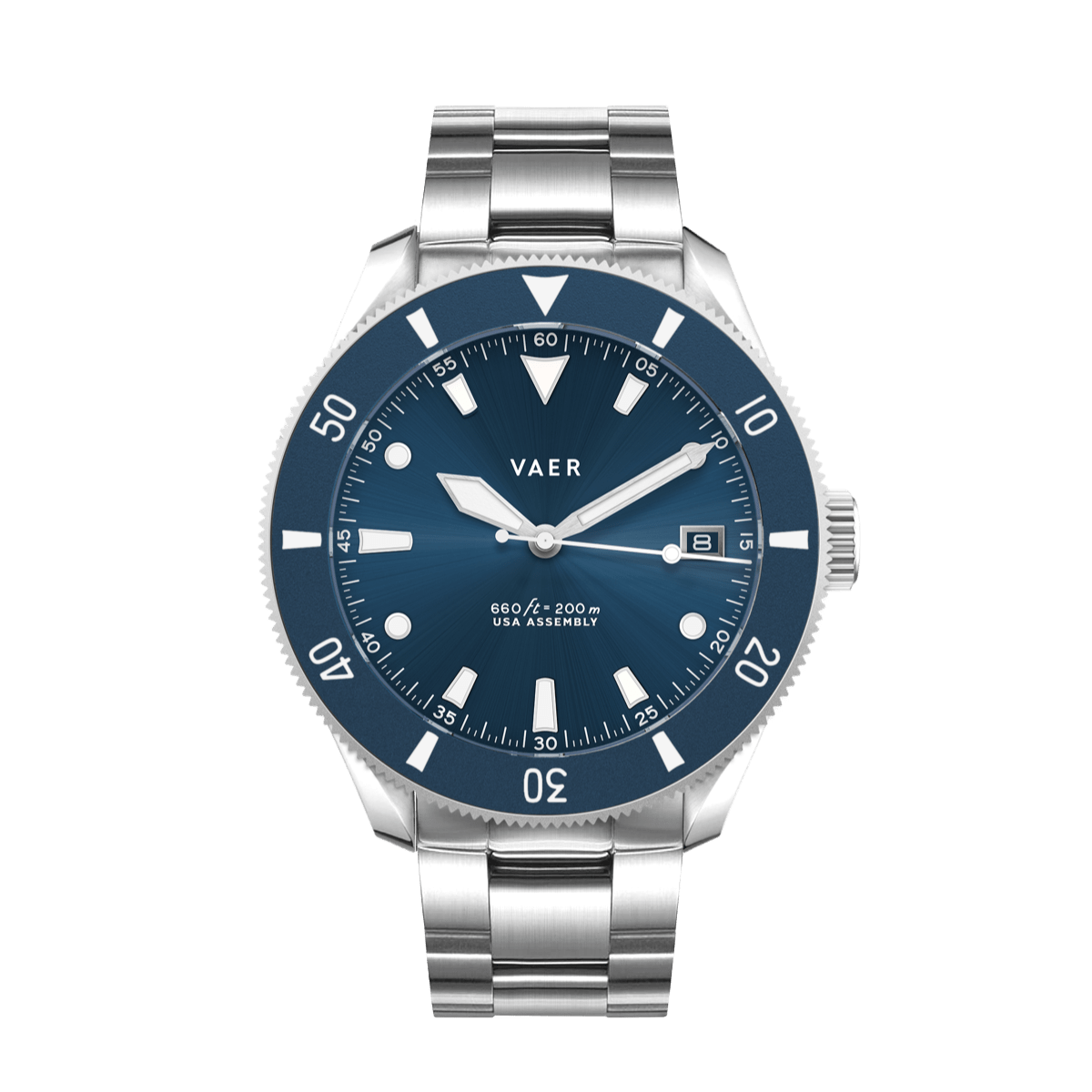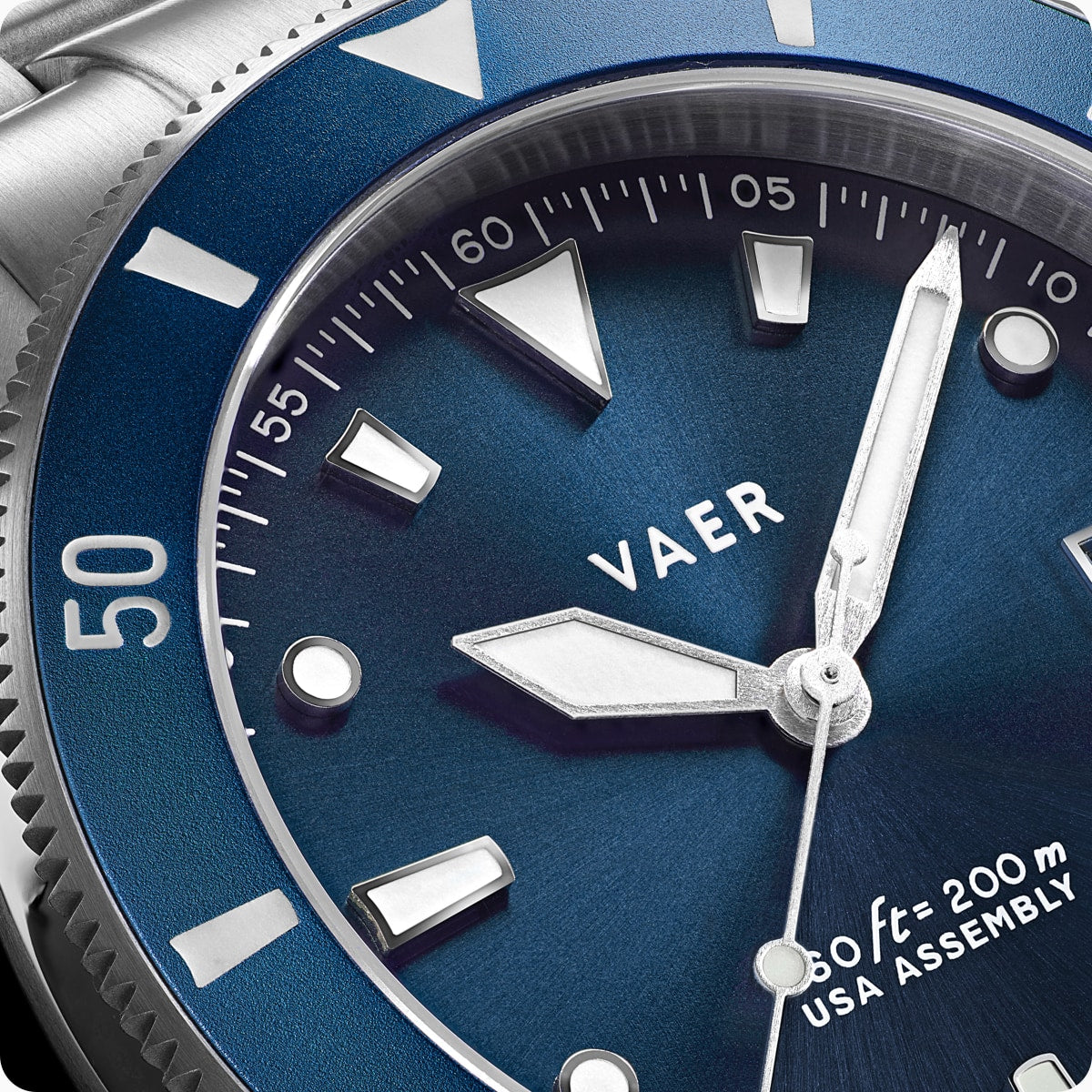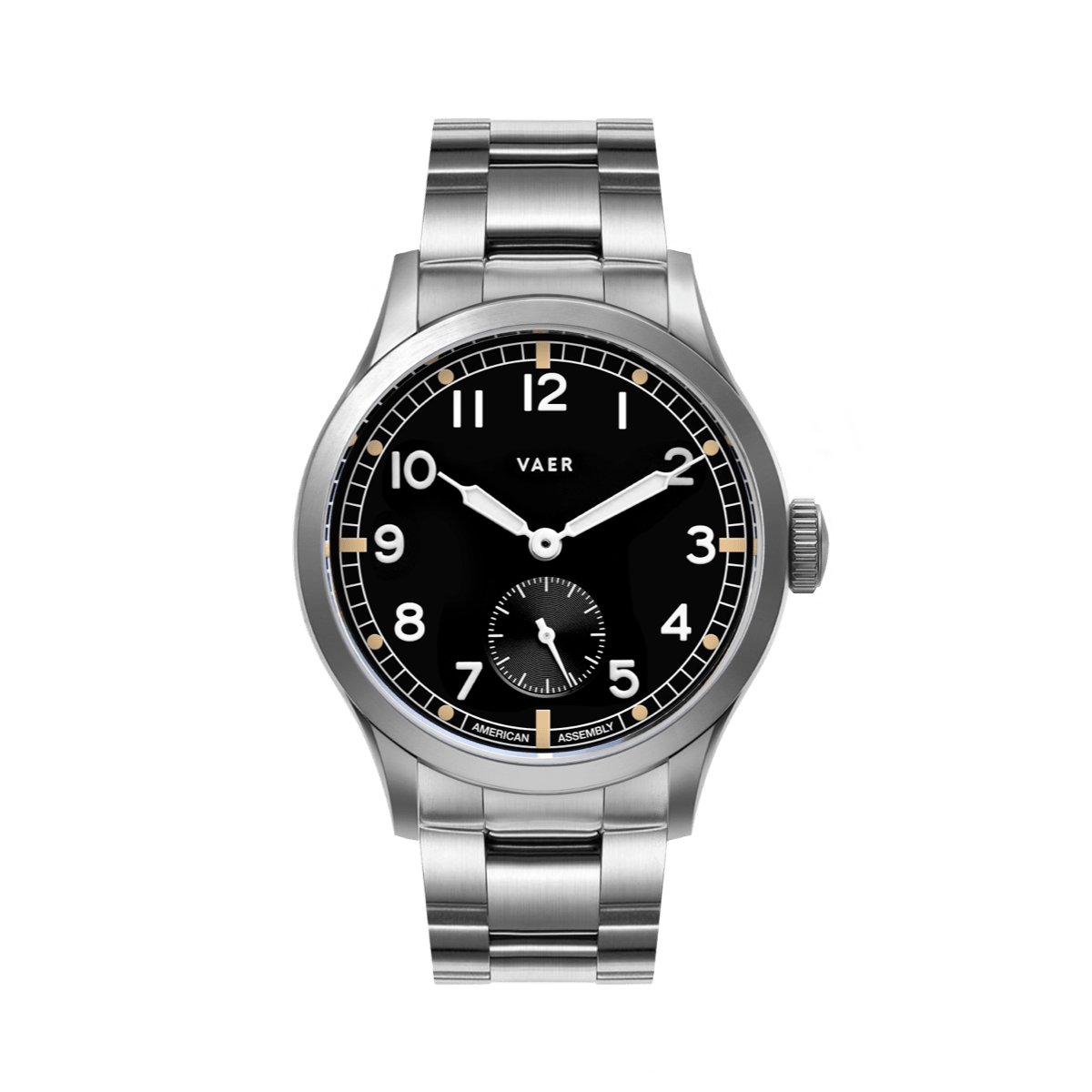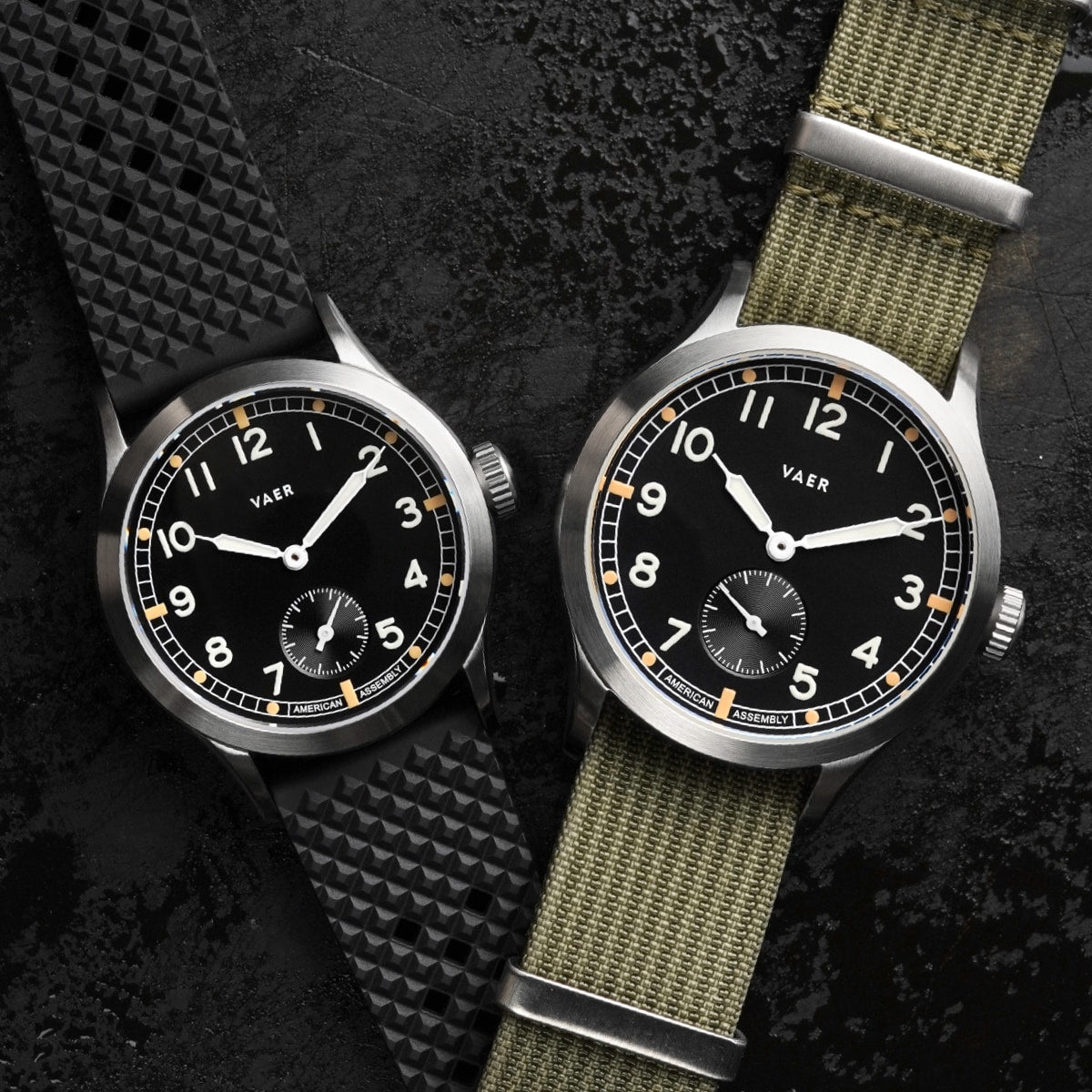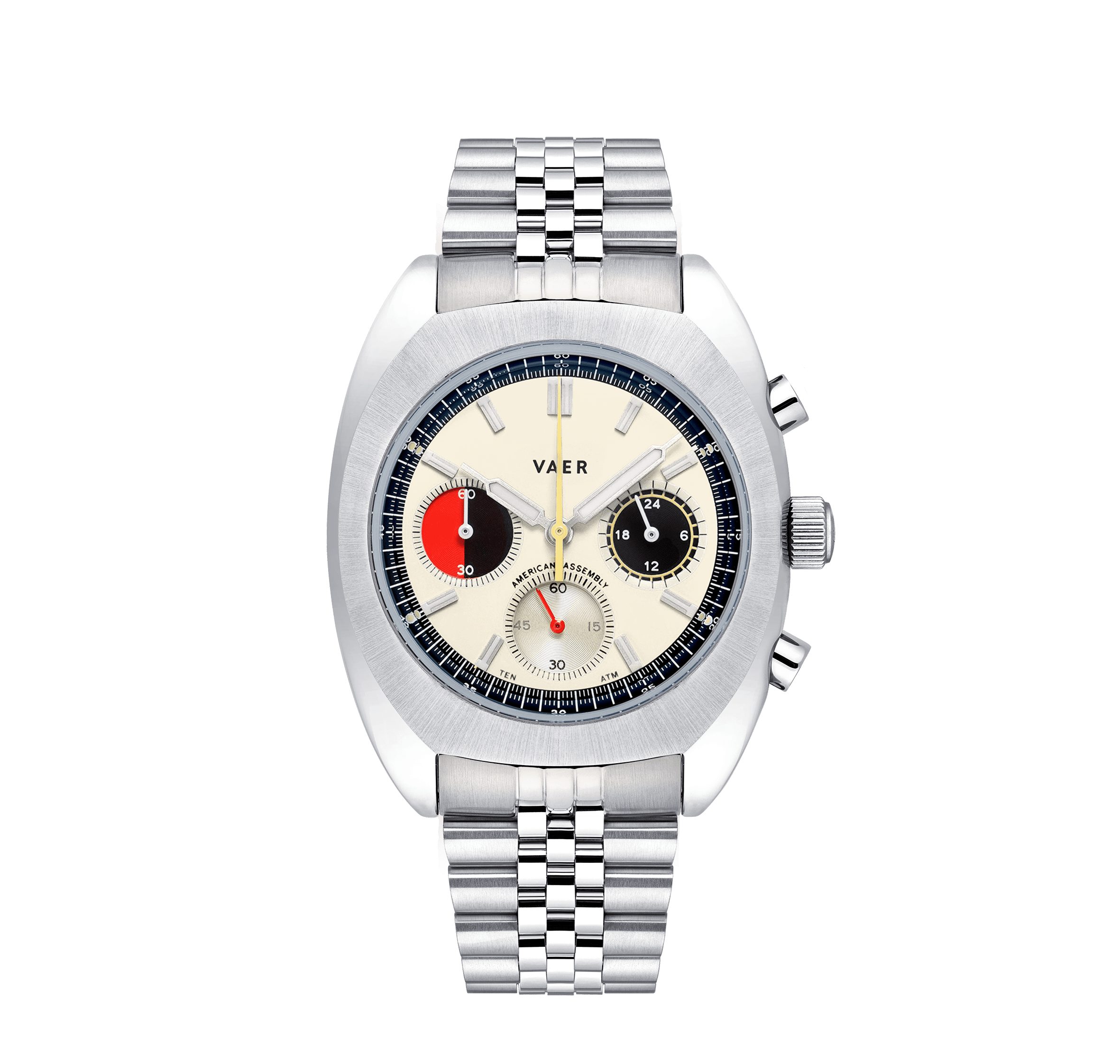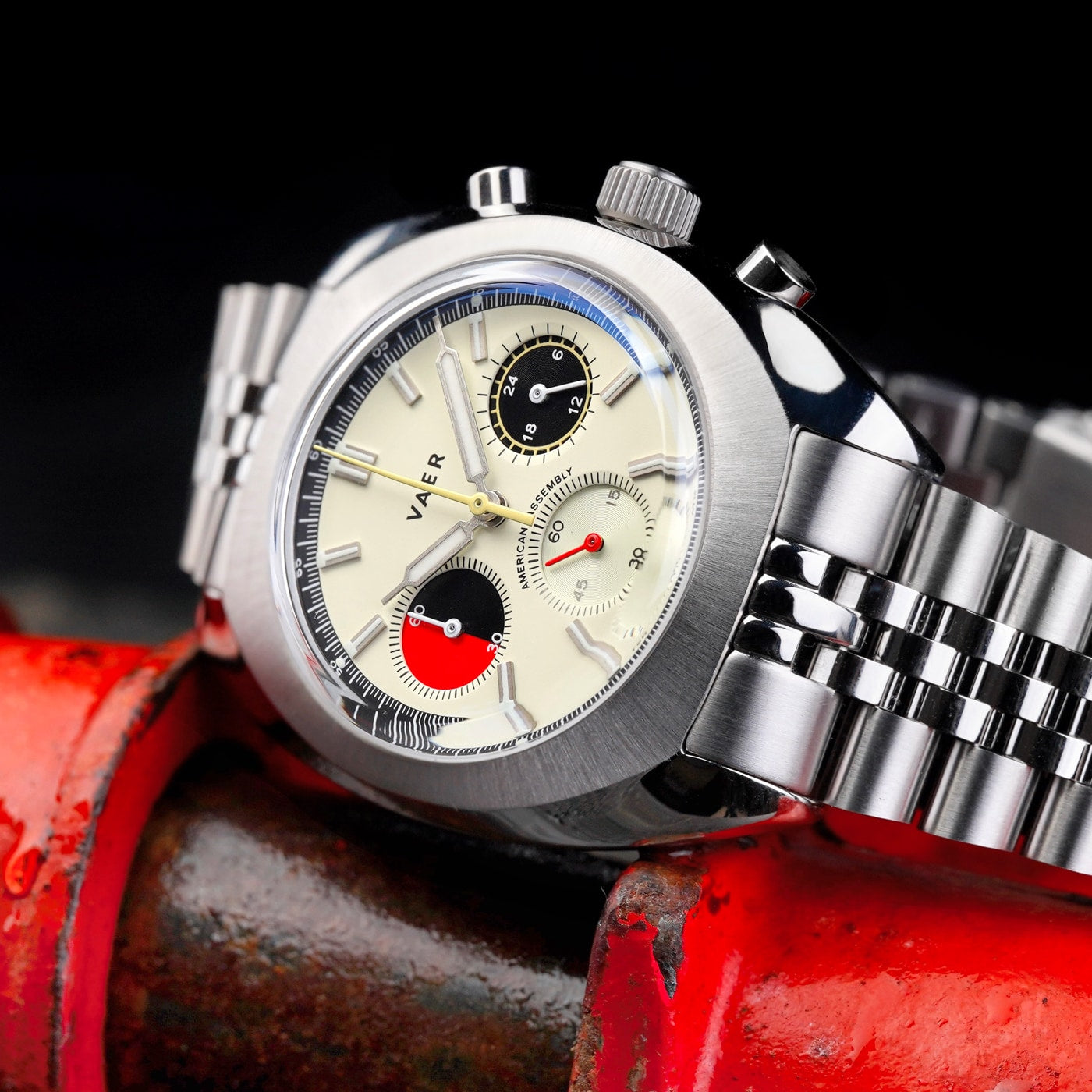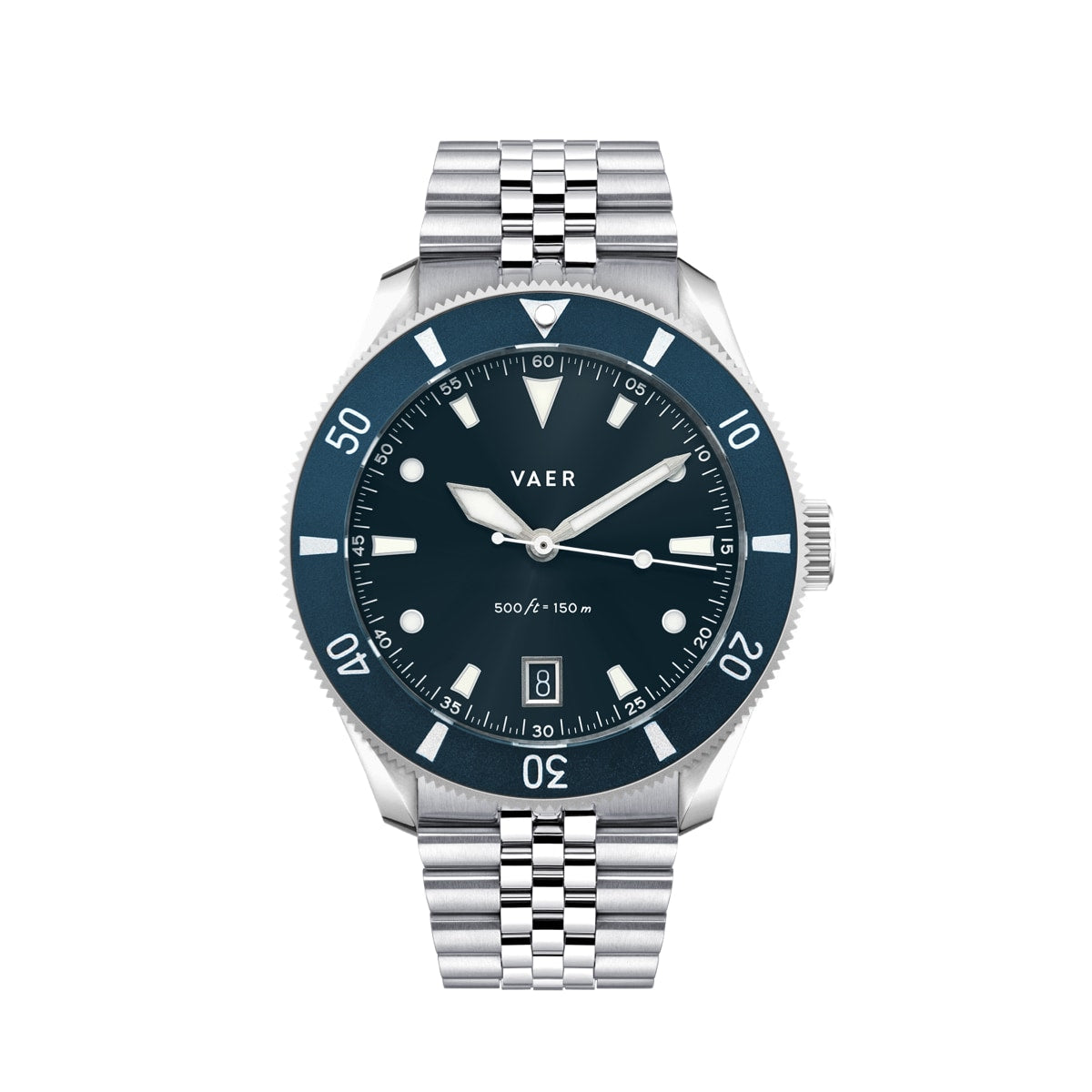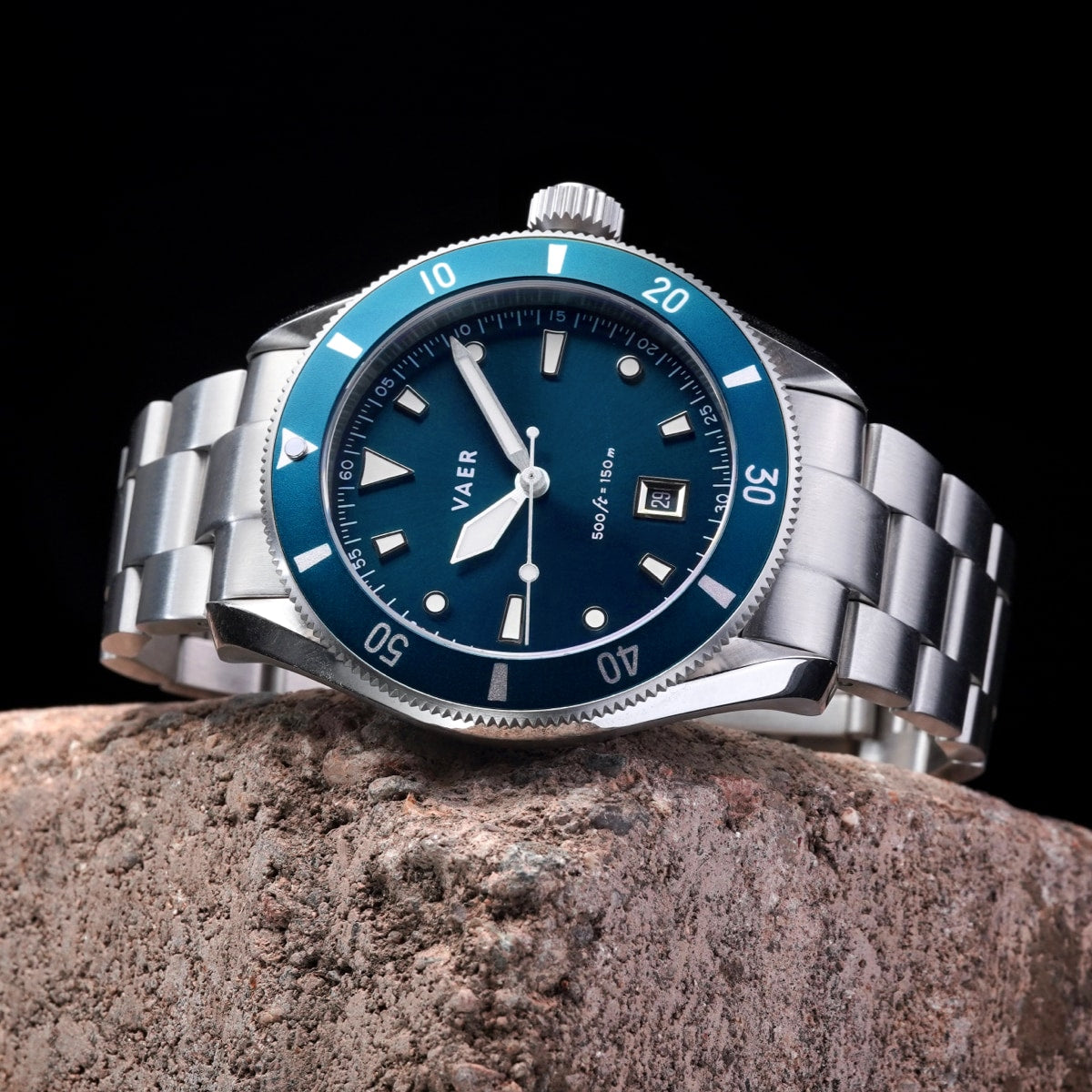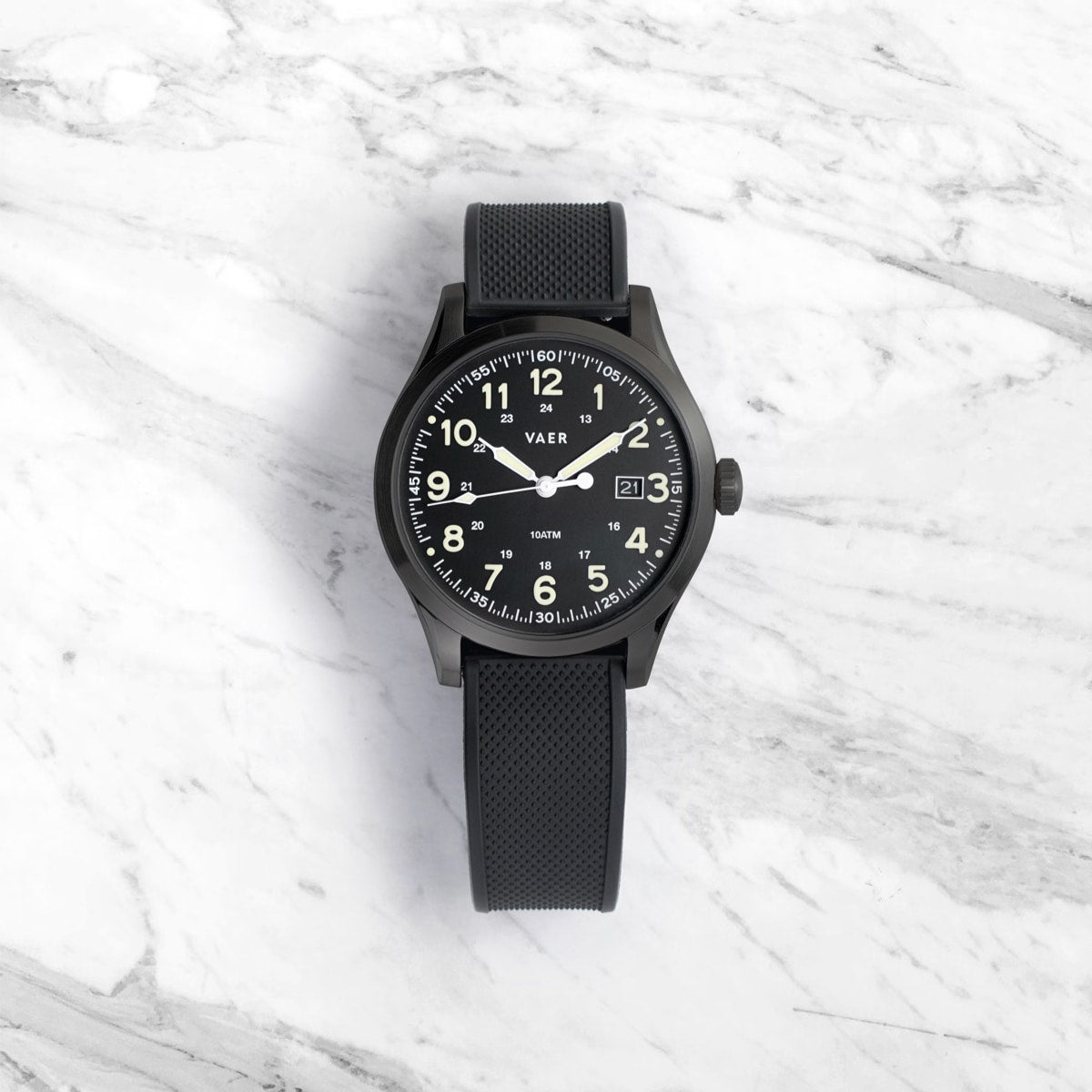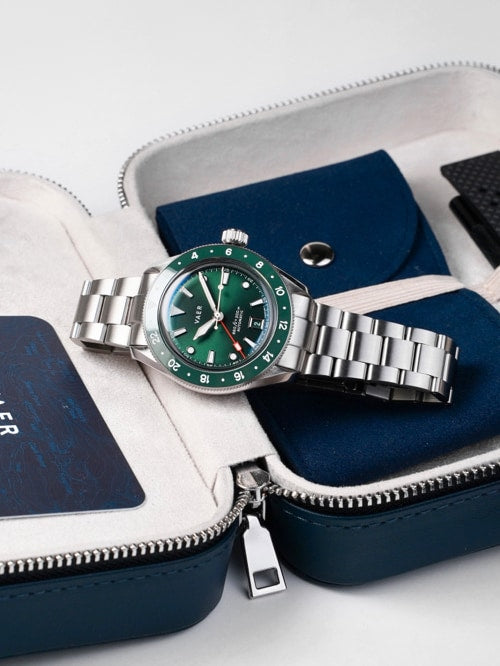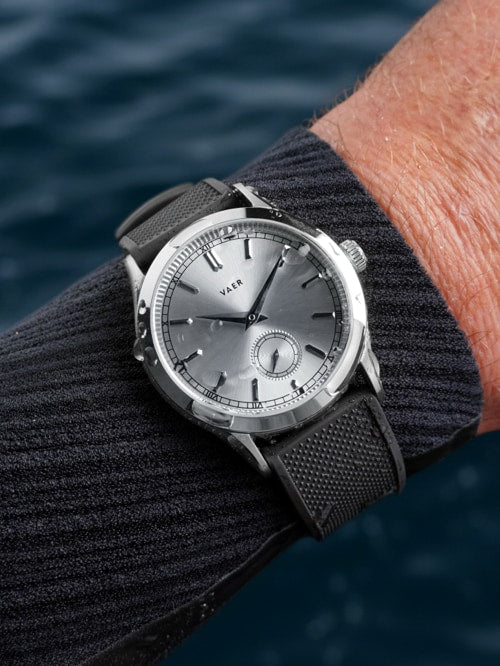If you've been on a Vaer product page, you've probably noticed us mention lume. But what exactly is it?
In simple terms, lume, short for luminous paint, is a chemical compound that can be painted onto the hands, dials, and bezels of watches to help them glow in the dark.
As with many aspects of horology, both the technical science and daily functionality of luminous paint is not well understood - even by many veteran collectors. In this article we’ll try to provide some clarity - providing a concise summary of the history and science behind the material, and also sharing our recommendations on what to look for when shopping for a watch that glows in the dark.
"Since the beginning of Vaer, we’ve been obsessed with making our lume performance as strong as possible. We’ve spent countless hours filming comparison tests with old watches, competitor watches, and new samples, compiling notes, and pushing to offer the best performance for the price."

The Chemistry Behind the Glow
To understand the science behind luminous paints, you need to understand phosphorescence. Certain substances can absorb light energy and re-emit it over time. By the early 20th century, radium, a radioactive element discovered by Marie Curie, became the element of choice for making watch hands and markers glow in the dark. Radium paint worked by mixing radium salt with a phosphorescent substance, usually zinc sulfide. The radioactivity of radium would excite the electrons in the phosphorescent material, causing it to glow for a significant amount of time.
By the mid-20th century, radium paint was widely used in wristwatches. Brands like Rolex, Panerai, and Omega adopted radium to illuminate their dials. However, radium’s radioactivity wasn’t limited to exciting phosphorescent materials; it also posed health risks to those exposed to it. The notorious case of the “Radium Girls” — factory workers who painted radium on watch dials and unknowingly poisoned themselves — was a tragic reminder of the risks associated with radioactivity.
The hunt for a safer yet effective alternative led to the development of non-radioactive luminous compounds.

What is Super-LumiNova?
Enter Super-LumiNova, a safe, efficient, and widely adopted luminous compound. First introduced in the 1990s, Super-LumiNova is a strontium aluminate-based compound that’s charged by exposing it to a light source. Unlike radium, it’s not radioactive. Once “charged,” Super-LumiNova glows brightly initially and then gradually fades as it releases stored energy.
Does All Lume Glow the Same?
Swiss Super-LumiNova has become a staple in the watchmaking industry due to its non-radioactive nature, safety, and brilliant luminosity. But not all Super-LumiNova paints are created equal. While they all stem from the same basic compound, different variations offer diverse brightness, color, and glow duration.
Here at Vaer our “education” on lume paint, has probably been the most involved and on-going of any part of manufacturing journey. Unlike water resistance, which is very much a PASS/FAIL scenario, lume is much more subjective.
Over the years we’ve tested dozens of different lume compounds (and suppliers) and have learned a lot along the way. As of 2023, we settled on using three main compounds in our watches, and in our opinion, these represent the best possible lineup of lume compounds available today.

Lume Colors & Performance - C3 vs. BGW9 vs. Old Radium
In order to match the aesthetics of different watches, Super-LumiNova is offered in different colors. Generally, as the color of the lume paint is reduced, the power of the lume is reduced. This is because in order to change the color, you must mix “non-luminous” paint in with the luminous material, which effectively waters down the power. C3 Super-LumiNova is essentially uncolored lume compound.
C3 Paint: C3 is renowned for its brightness, and is the strongest color in the Super-LumiNova scale. which is why many watch enthusiasts refer to it as the brightest Super-LumiNova paint. In daylight or when not glowing, it often appears as a pale green or off-white color on the watch dials or hands. However, in the dark, it shines with a vibrant green hue.
BGW9 Paint: BGW9, unlike C3, glows in a blue hue when in the dark. This paint is the second in strength to C3 in the Super-LumiNova Color Scale. In daylight or when not glowing, BGW9 tends to have a white appearance, making it popular among watch enthusiasts who prefer a more classic look during the day but still want the luminosity in the dark. BGW9 may not have the initial brightness punch that C3 possesses, but it generally has a similar longer-lasting glow.
Old Radium Paint: While the name is confusing - Old Radium paint is NOT radioactive, and in fact contains no actual radium. It’s simply a tan tinted version of C3 SuperLuminova, that’s mixed with yellow/gold paint to achieve a vintage aesthetic. The reason that it’s called Old Radium is that many vintage time pieces that used radium paint in the 1950s, 1960s and 70s tend to have a consistent patina in which the original white lume paint yellows or “tans” over time. Modern watches the like the Vaer Tradition and Korean Field use Old Radium lume to honor this popular retro aesthetic. While Old Radium is a strong lume paint, it is not as strong as C3 or BGW9 lume, as it is diluted with coloring.

Understanding Grades of Super-LumiNova
Another important element to lume strength and performance is tied to the grade used. Super-LumiNova comes in three grades: Standard, Grade A, and Grade X1.
- Standard Grade is the least expensive and has the shortest afterglow time.
- Grade A has a longer afterglow time than Standard Grade.
- Grade X1 is the most expensive and has the longest afterglow time.
We use each of the above grades in a variety of our watches. In general, you’ll find Standard in our most affordable watches, Grade A in mid tier, and Grade X1 in top tier. A couple of important notes:
Lume grade is not the end-all-be-all marker for performance. For example, a lower grade lume with more layering can outperform a higher grade lume with less layering. Also, a lower grade lume of a better compound can outperform a higher grade lume of a lesser compound (eg. C3 of any grade will outperform even X1 Grade C1).
We use BGW9 in many of our watches due to the incredible performance of the compound - BGW9’s is not offered in X1 Grade, only Grade A, which we’ve tested to perform nearly as good as most other X1 compounds.

Does Layering and Surface Area Matter?
In addition to the type of lume compound used, the two factors that have the biggest impact on the strength and longevity of a lume’s glow is layering and surface area.
Layering: The idea is straightforward – the more layers of luminous paint applied, the brighter and longer-lasting the glow will be. This is why all Vaer watches with lume also have slightly raised markers or numbers. Each additional layer enhances the ability of the SuperLuminova to absorb and then re-emit light.
Surface Area: The larger the area painted with Super-LumiNova, the more light it can absorb and subsequently emit. Broad hands or large hour markers, therefore, tend to shine brighter and longer than thin hands or small dot markers. However, it’s crucial to balance aesthetics with functionality.
Why Do I Need Lume?
The importance of luminous paint in wristwatches extends beyond the realms of aesthetics and technological prowess. For many professionals, such as pilots, soldiers, and divers, a watch that’s readable in low-light conditions can be indispensable.
Even in everyday life, luminous watch dials prove their worth. Think about the times you’ve wanted to discreetly check the time during a movie or are out camping and want to know how many hours you’ve got until first light. While the modern instinct is to reach for your cellphone in these scenarios, in our opinion, a quick glance at your watch is a much better choice.

Will My Vaer Watch Glow All Night?
One of the biggest misconceptions around lume paint is the real world performance of the glow. The lume glow is NOT electronic, it’s NOT battery powered, it’s chemical phosphorescence. That means it constantly fades, and a high impact glow (as often depicted in our product photography) is only visible in the first 5-15 minutes between transitioning between daylight and darkness. However, the lume glow will still be visible for hours after. It will not be bright neon green, but once your eyes adjust to night, the watches markers will be visible for 6-8 hours with a full charge.
How to achieve the longest glow:
Just like with our Solar powered watches, the best way to charge the lume on your watch is to expose it to direct sunlight. 2-3 hours of direct sunlight will give the SuperLuminova paint enough energy for a full 6-8 charge - exposing the watch to a lamp or flashlight will help with a charge, but it’s much less effective than the sun’s rays.

What Vaer watch has the best lume?
We love lume at Vaer… in fact, we’re sort of obsessed with it. So generally speaking, most of our watches match up well with the competition when it comes to head-to-head lume performance. If you want the very best in the Vaer lineup, we’d have to suggest our Tactical collection, with the G5 Tactical GMT being the very strongest (25 layers of X1 Grade), and the C5 Tactical Solar, and A5 Tactical Automatic a close second. If you’re on a budget, the S5 Tactical is also a great option.
If you’re not a fan of the all-black PVD aesthetic of our Tactical models, our C3/C5 Design Navy is a fantastic option as well, as it’s lume specs are identical to the C5 Tactical.



